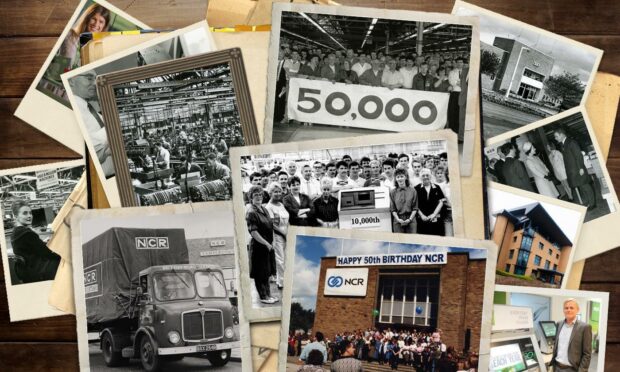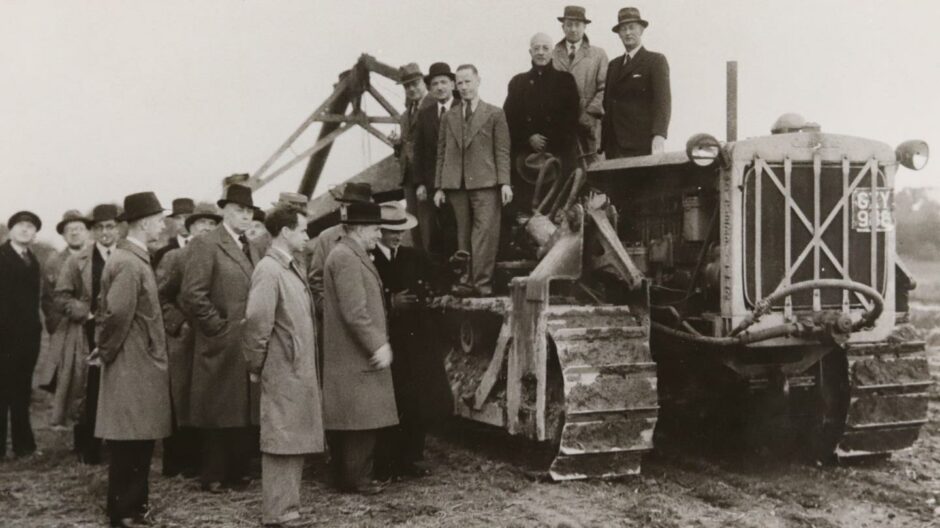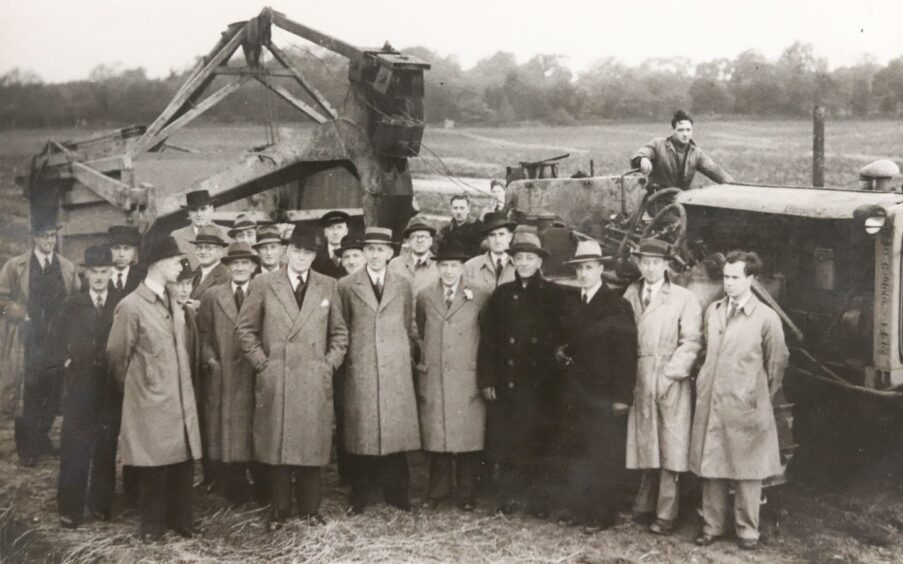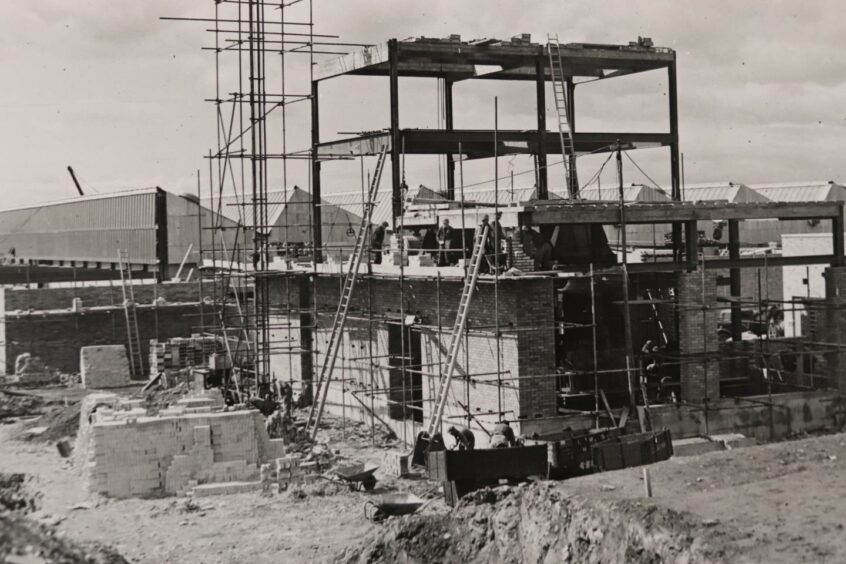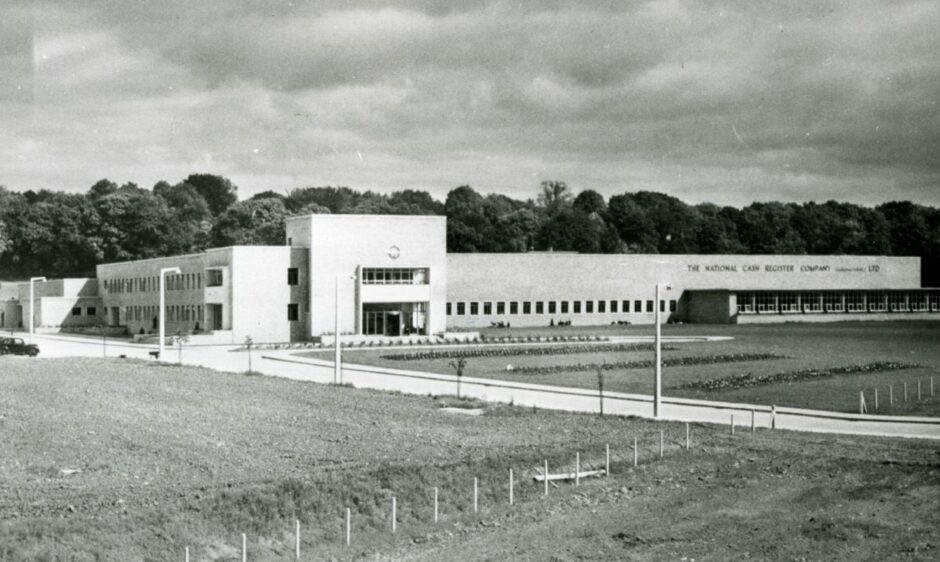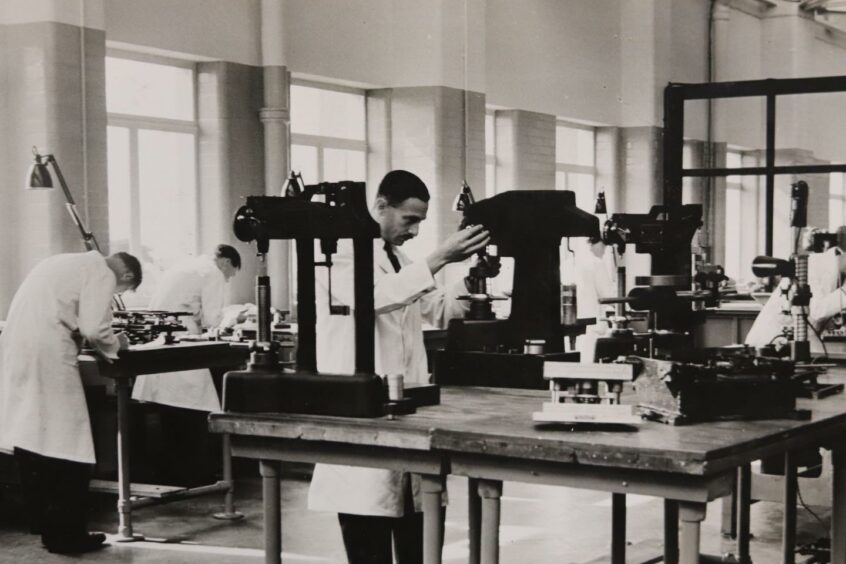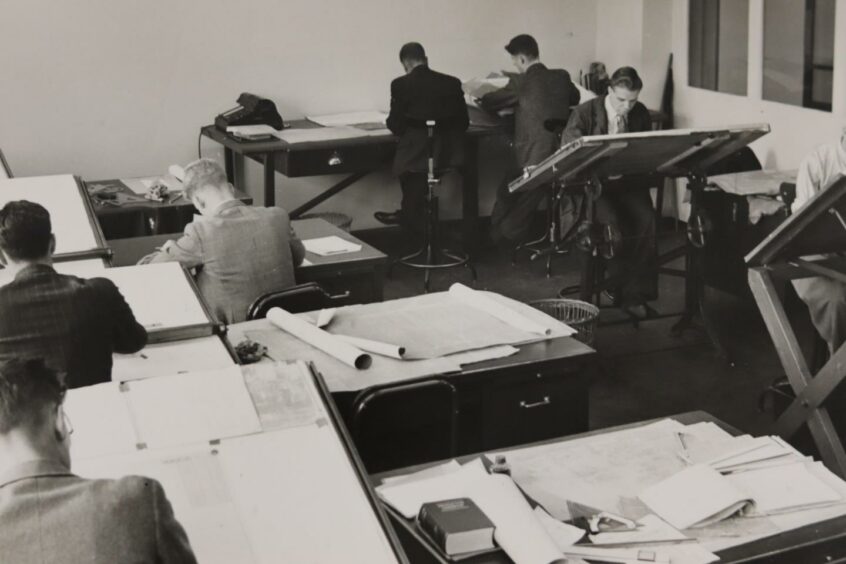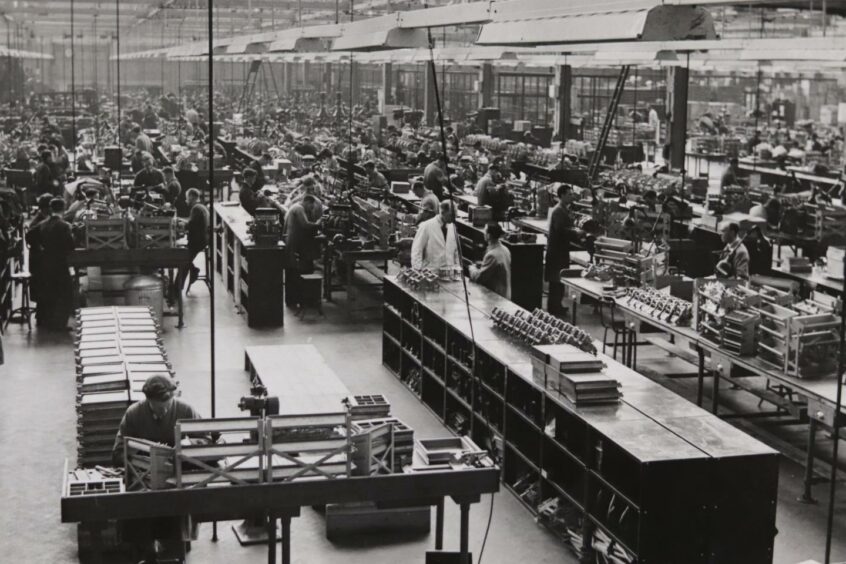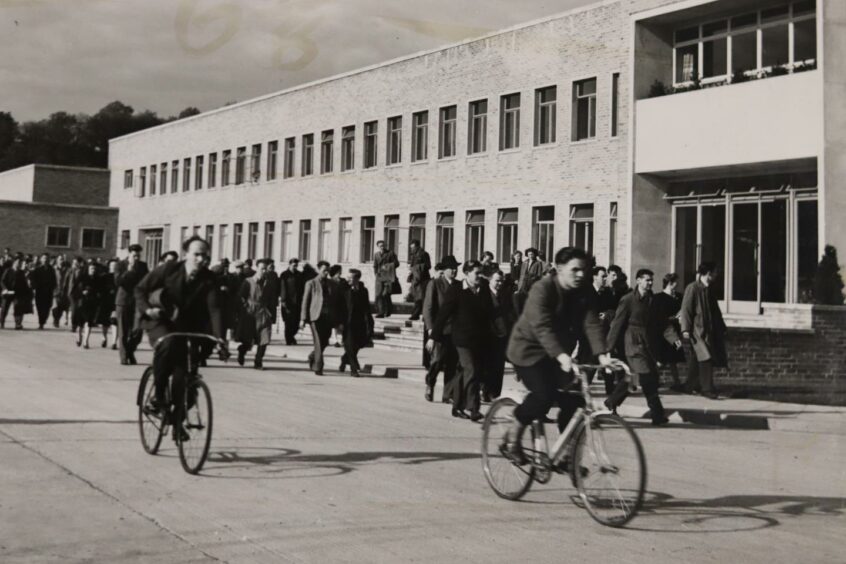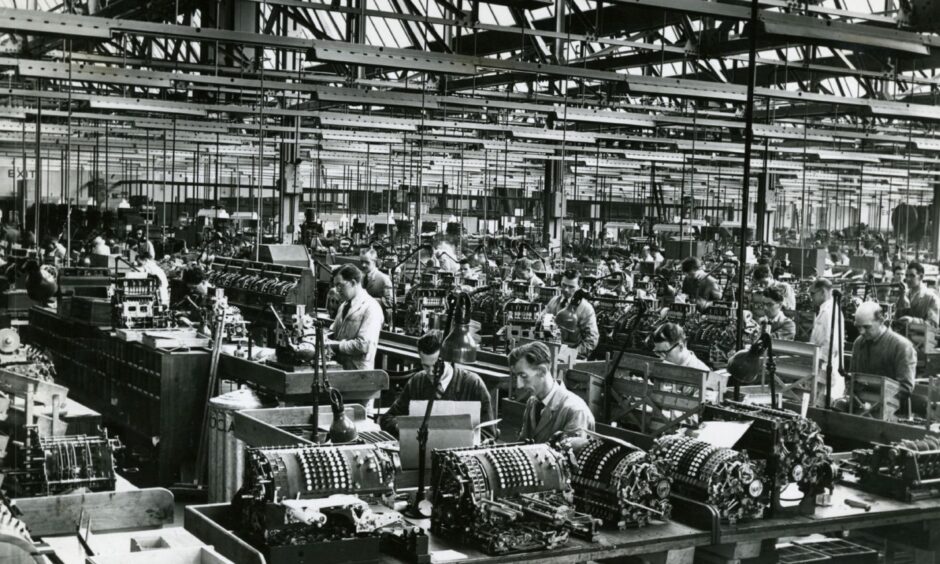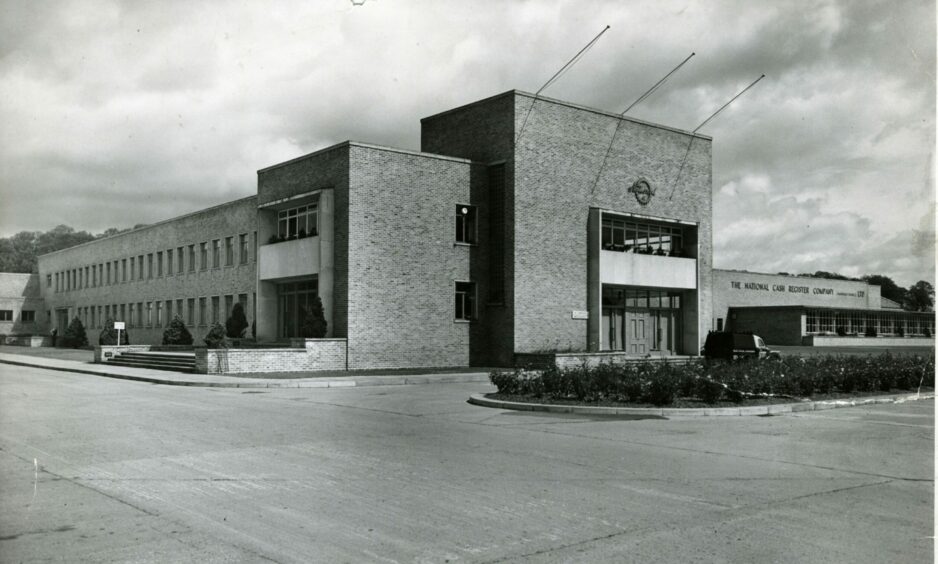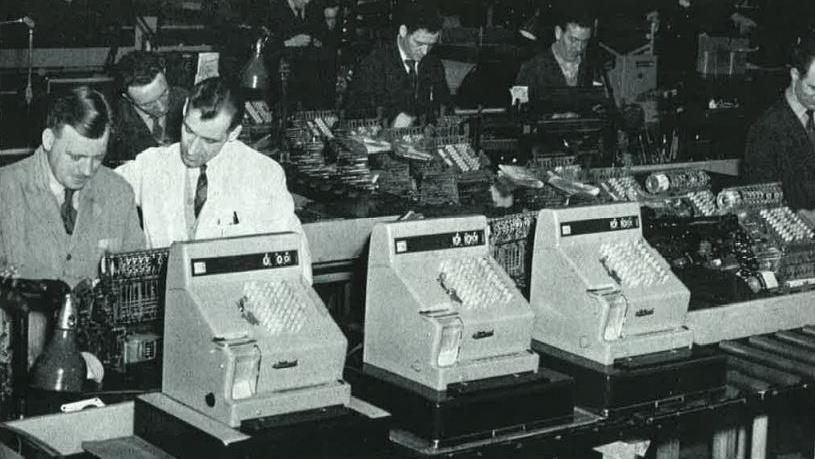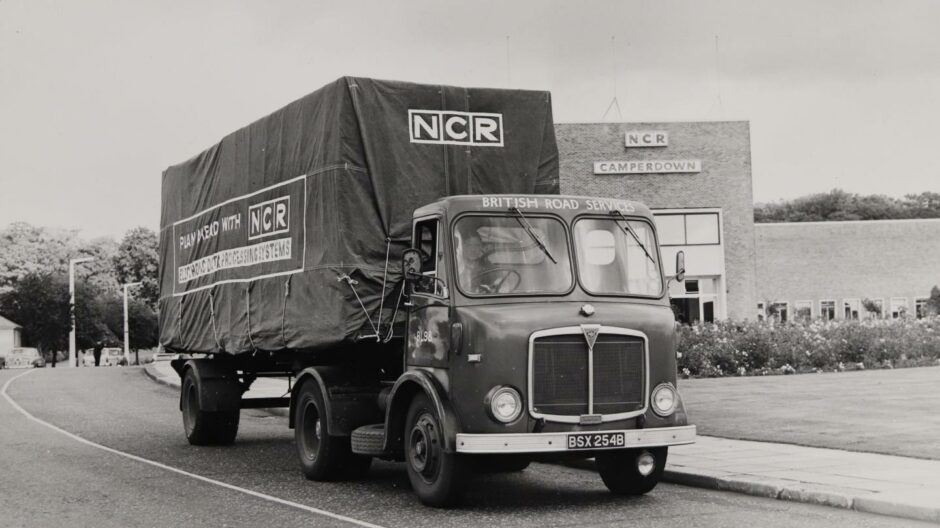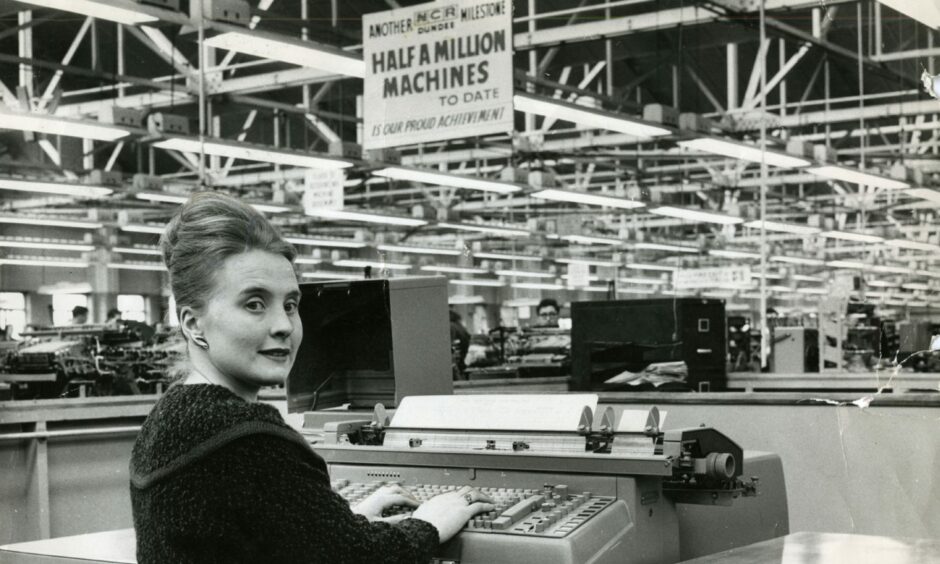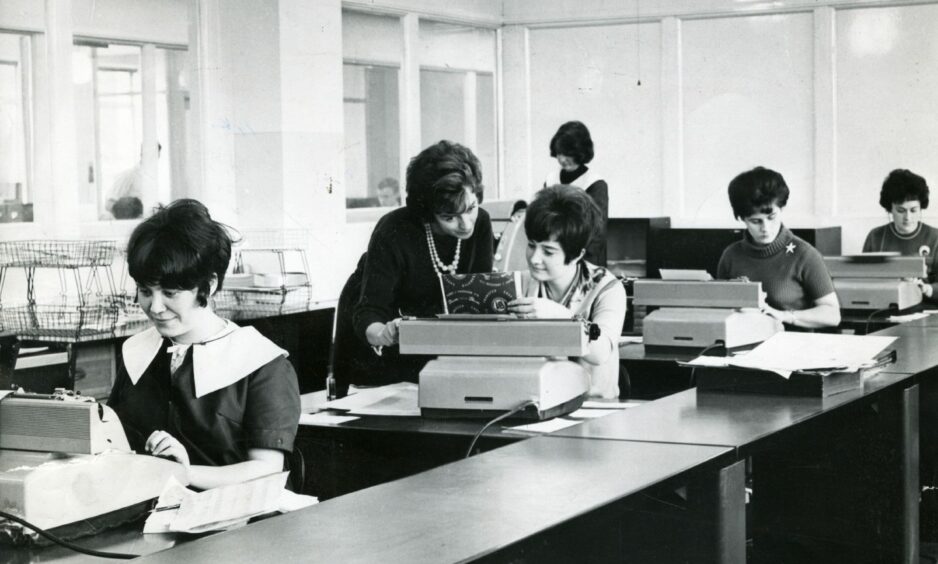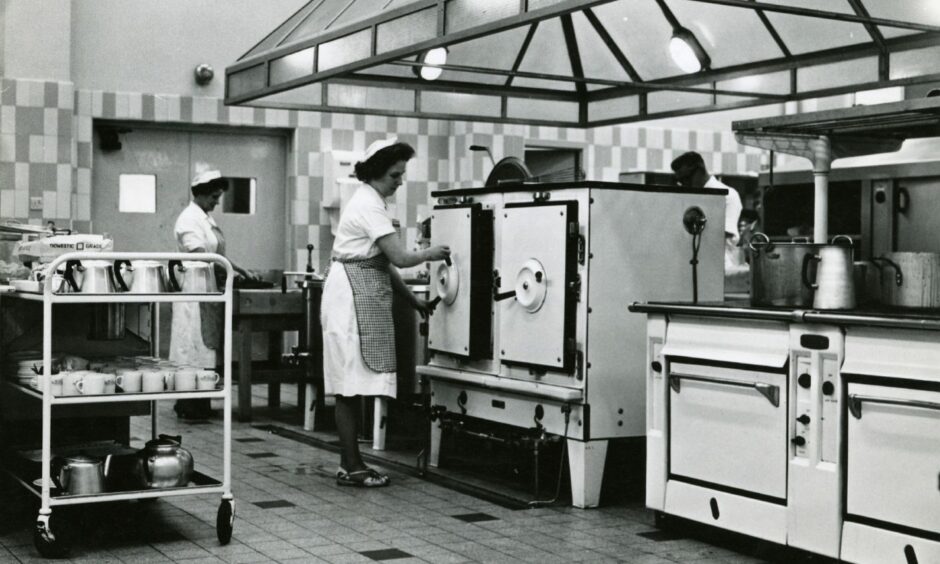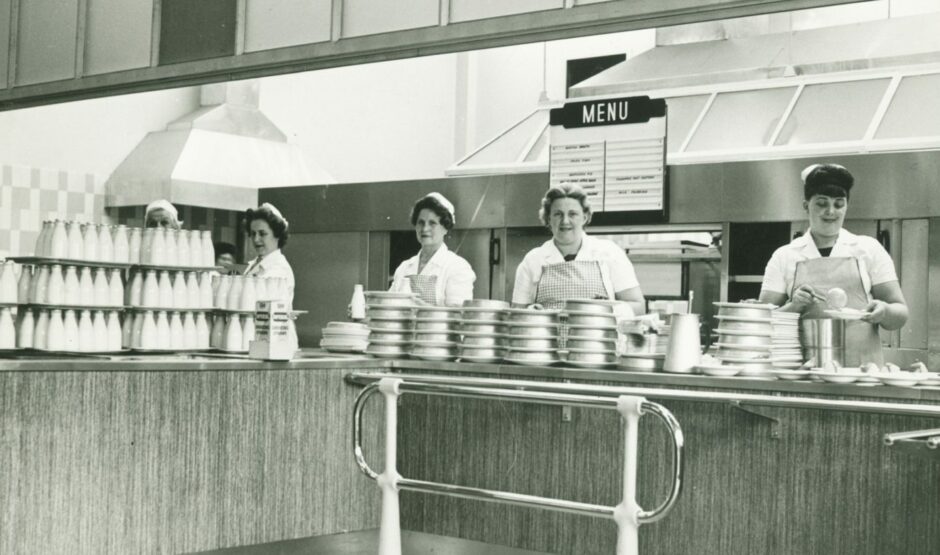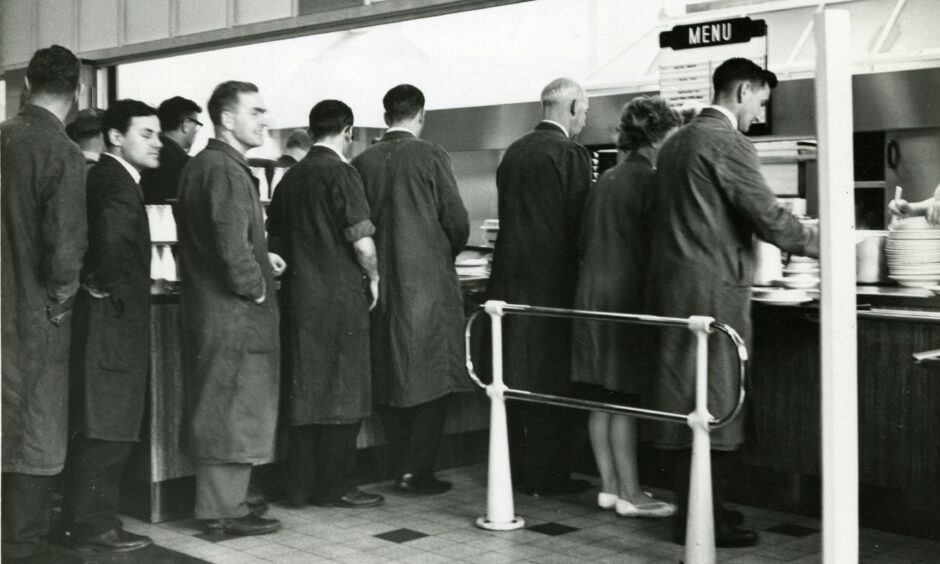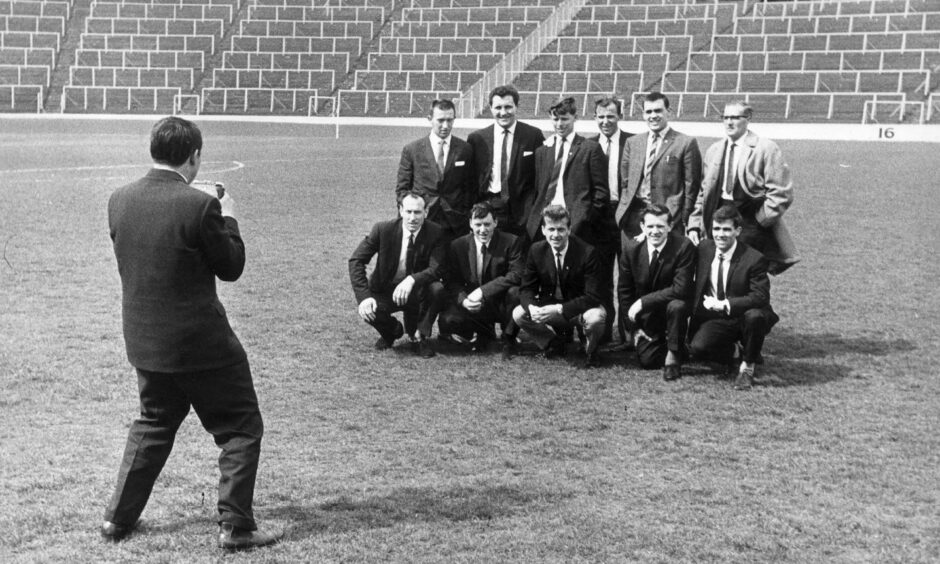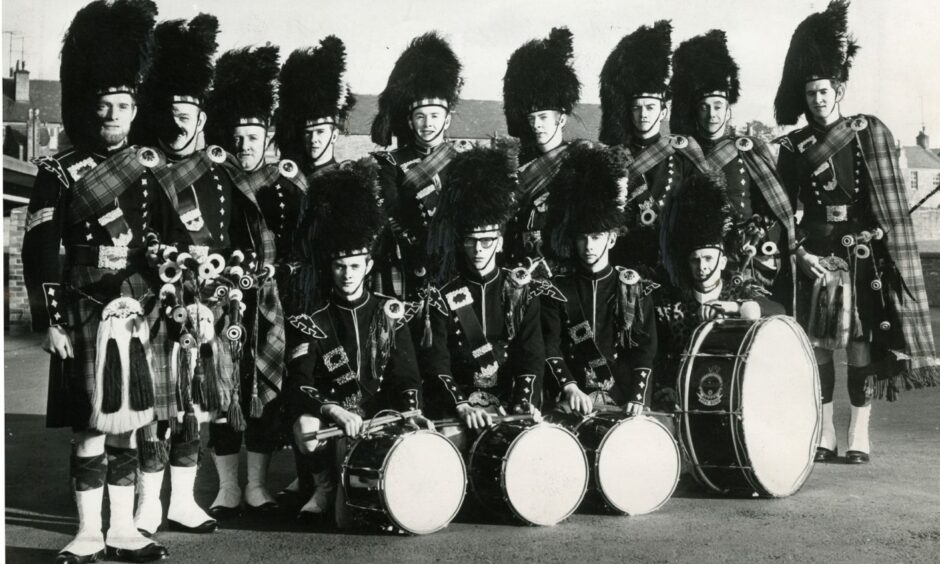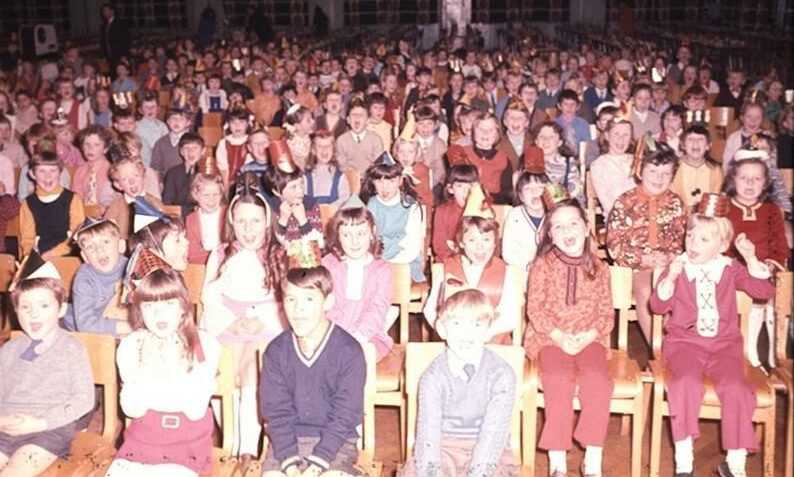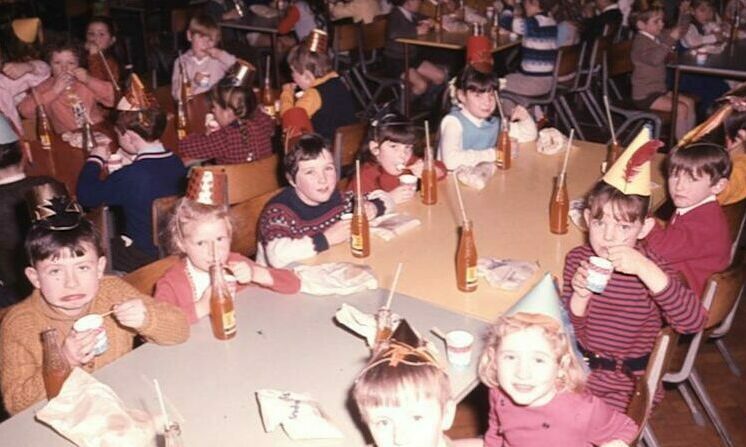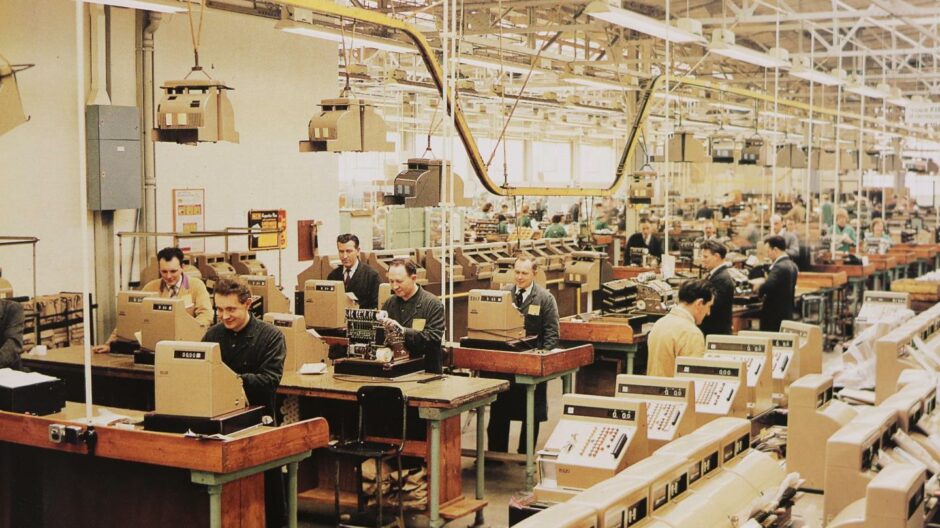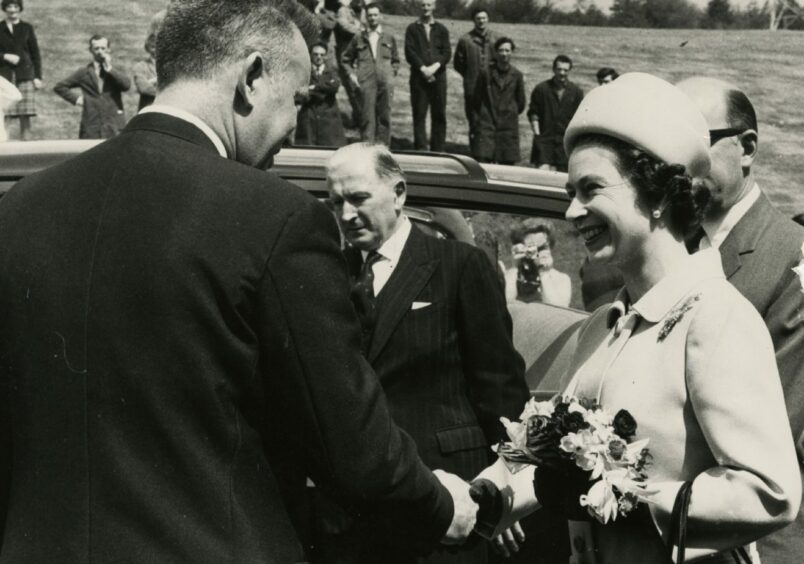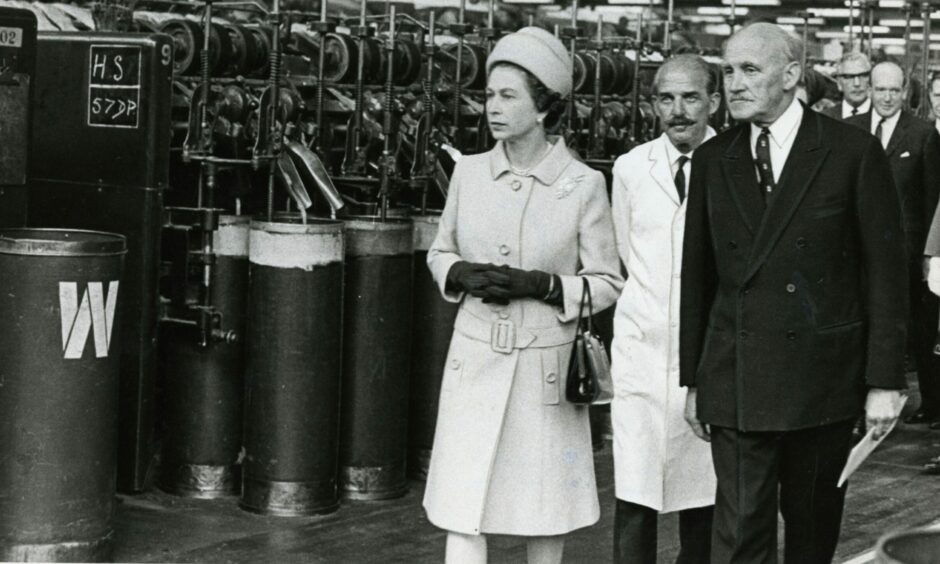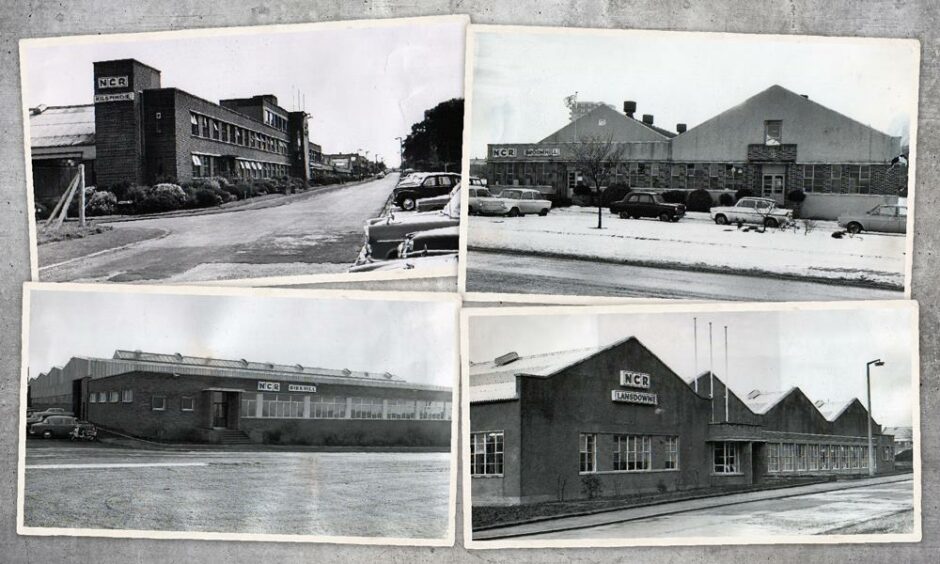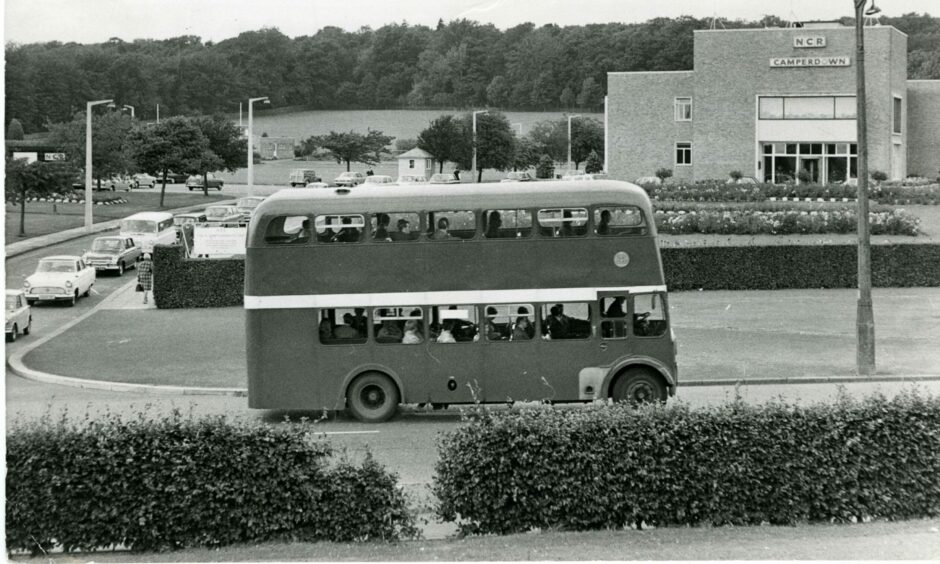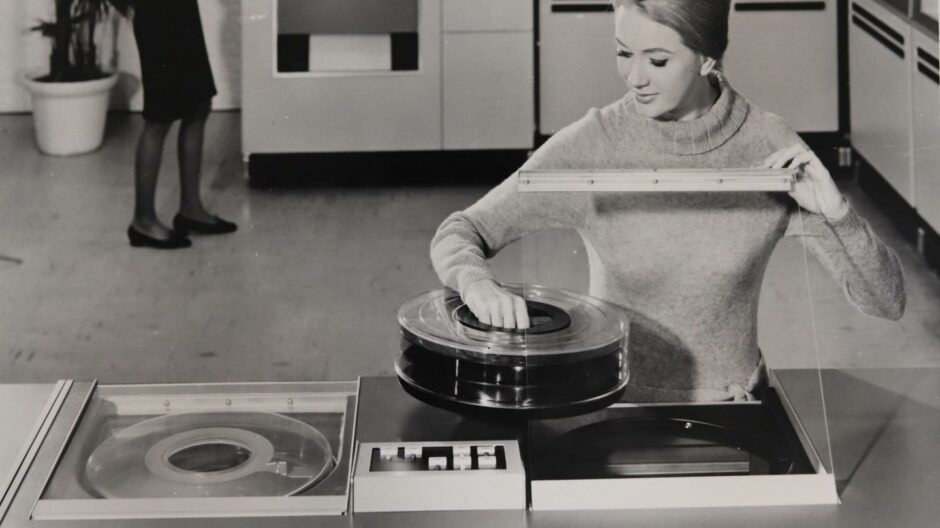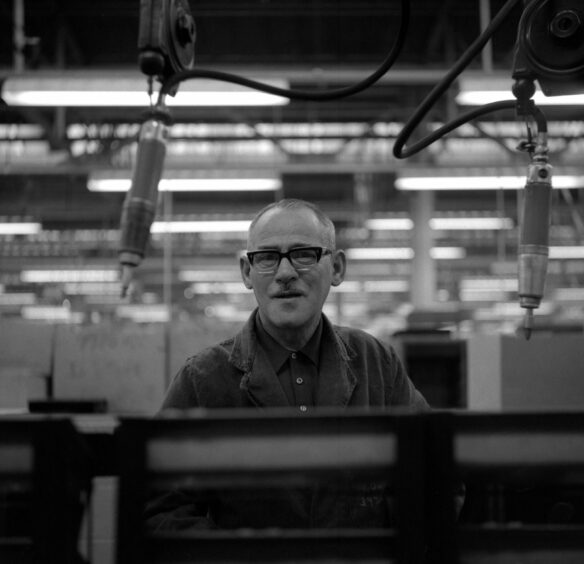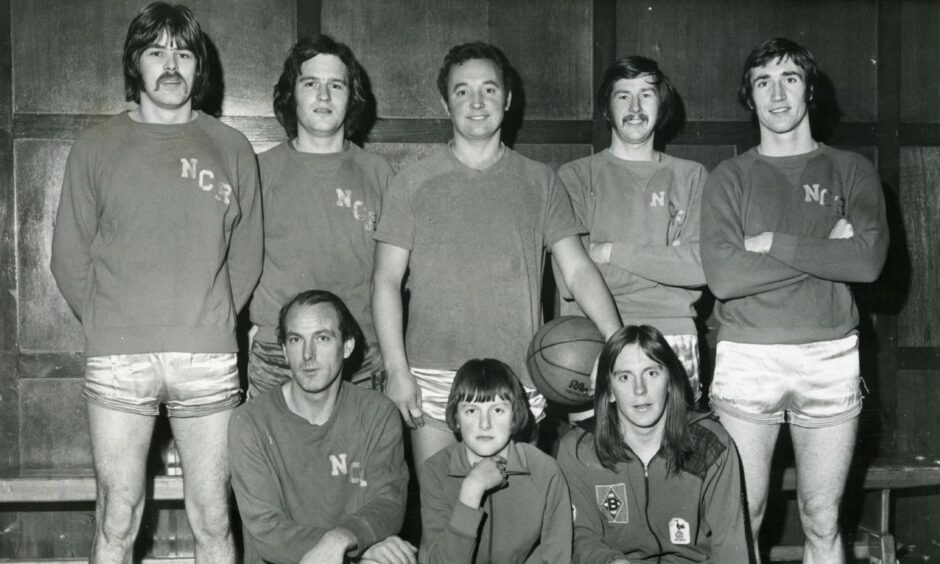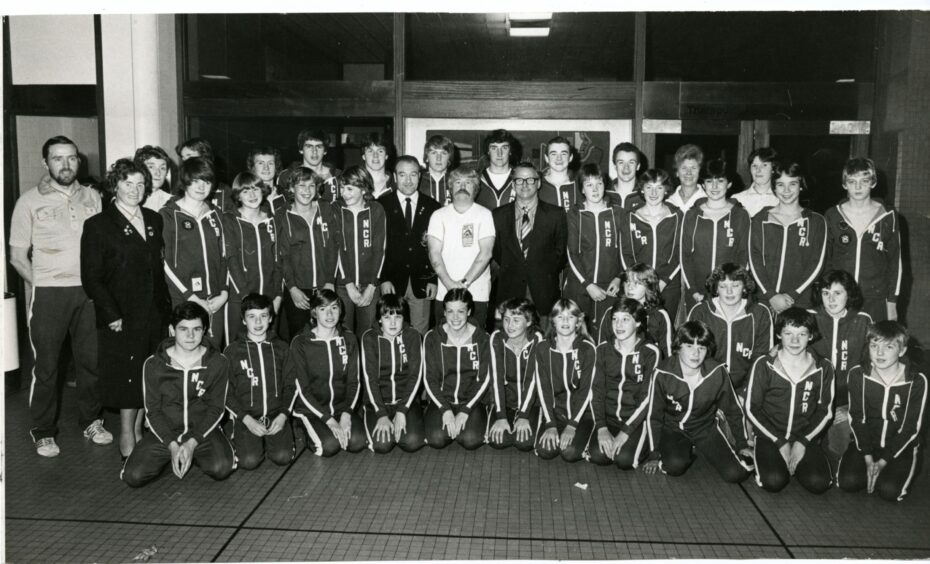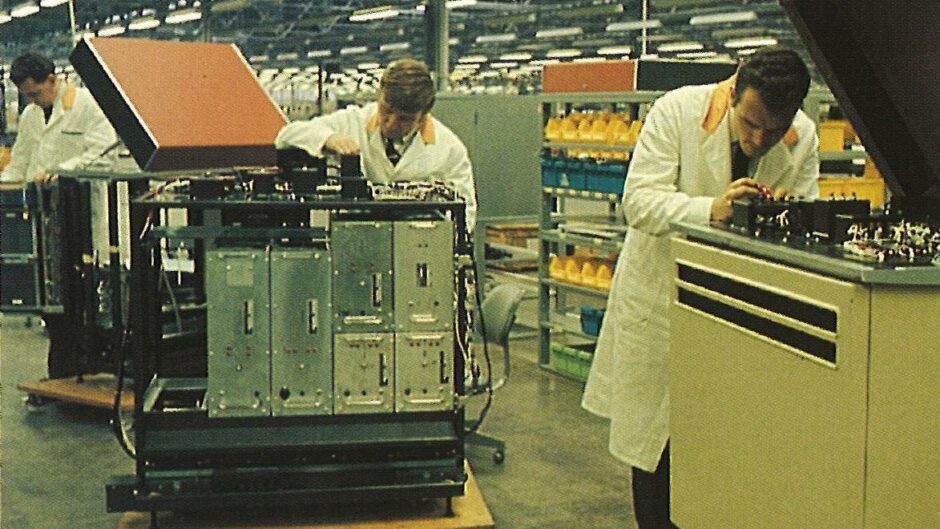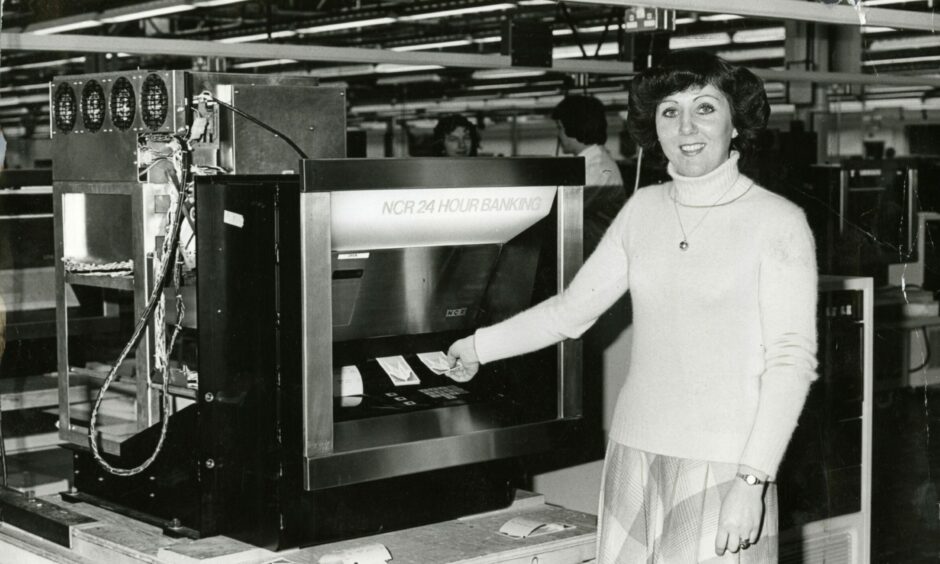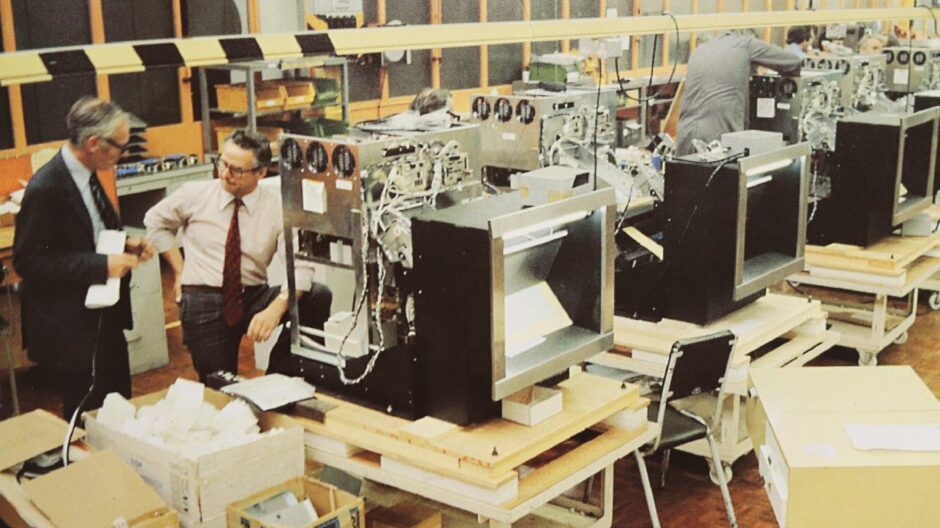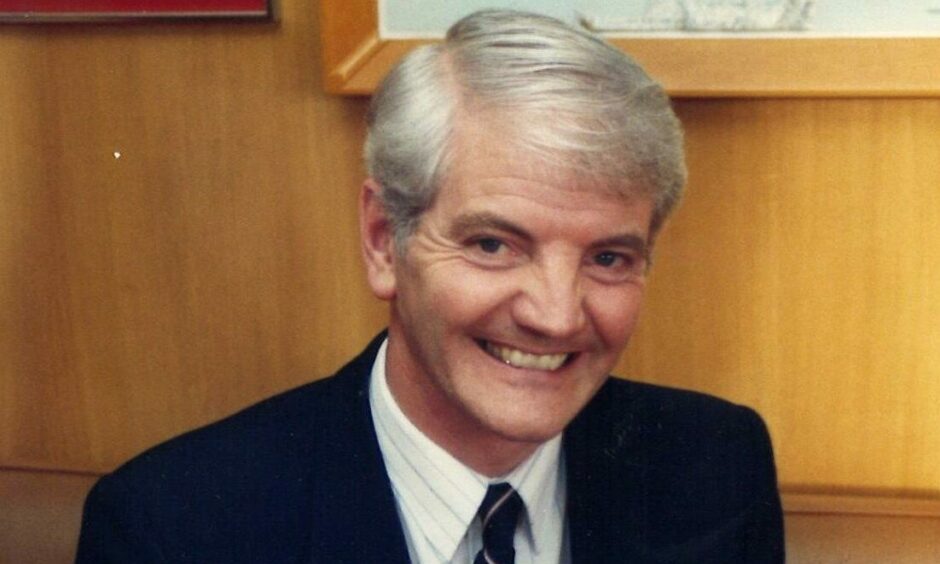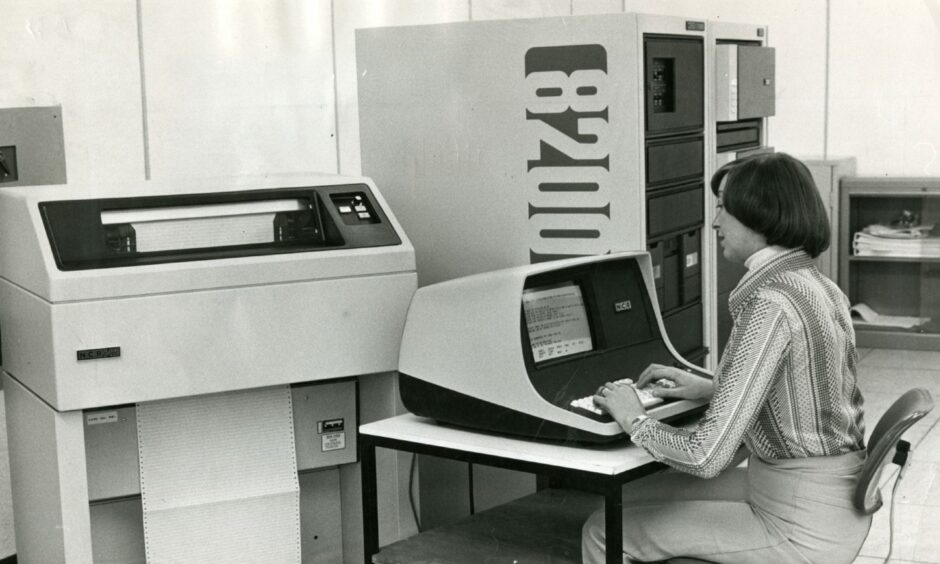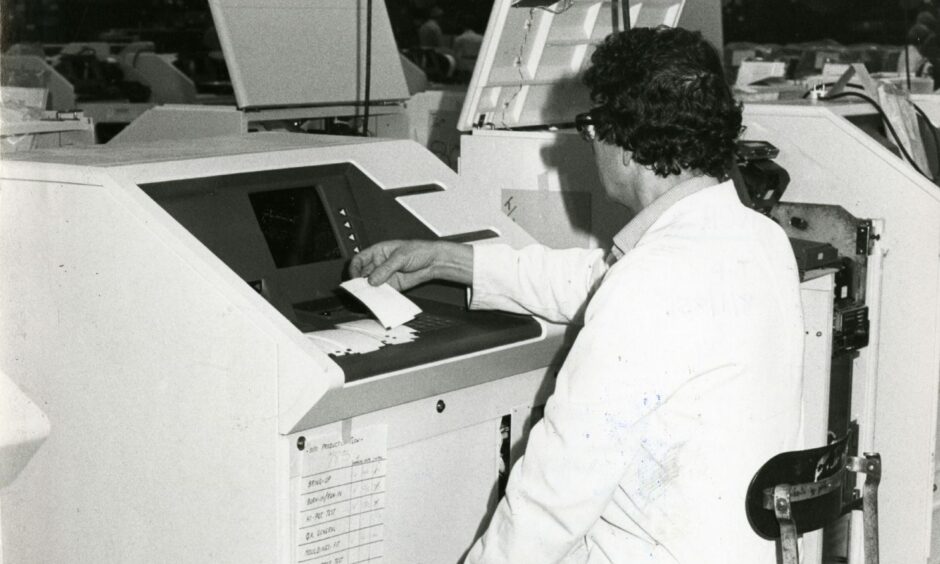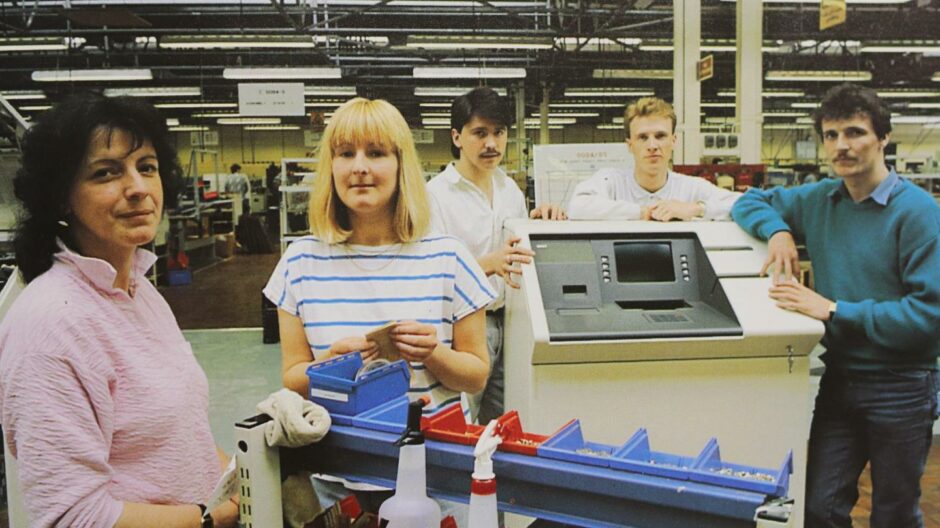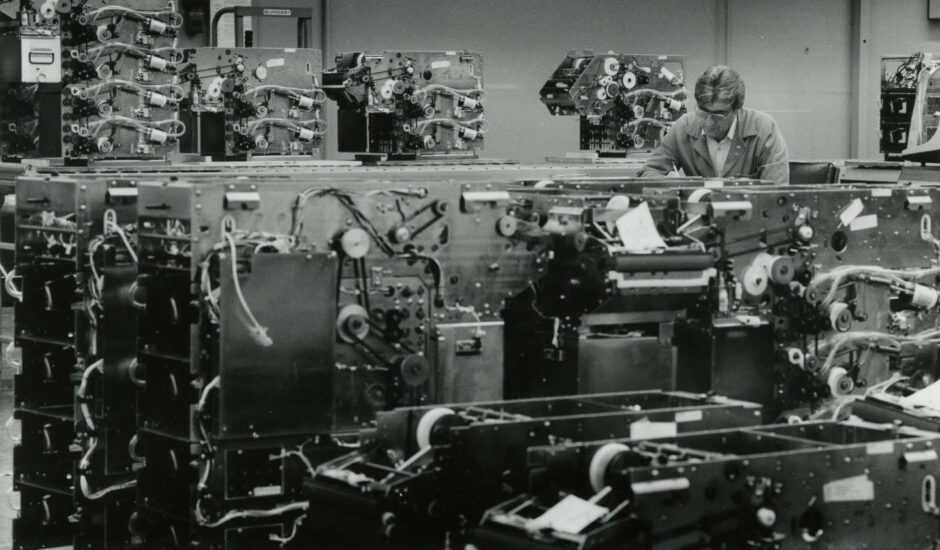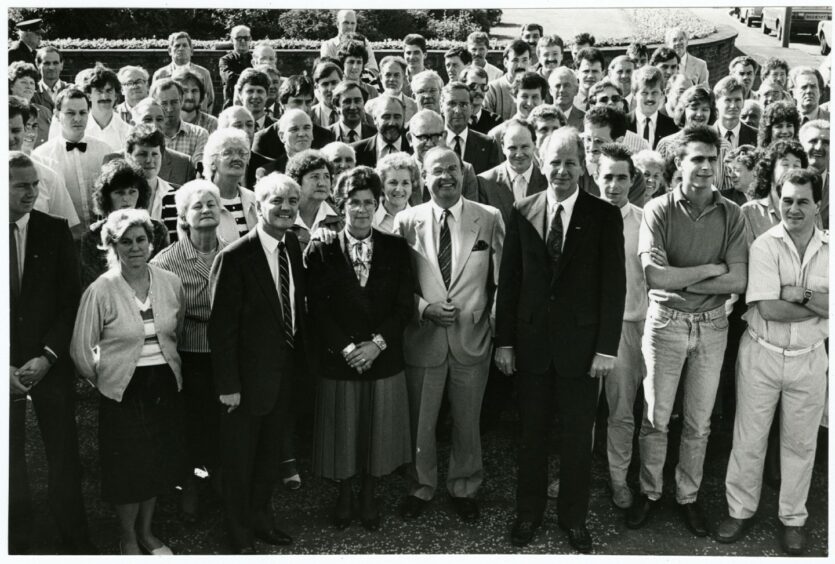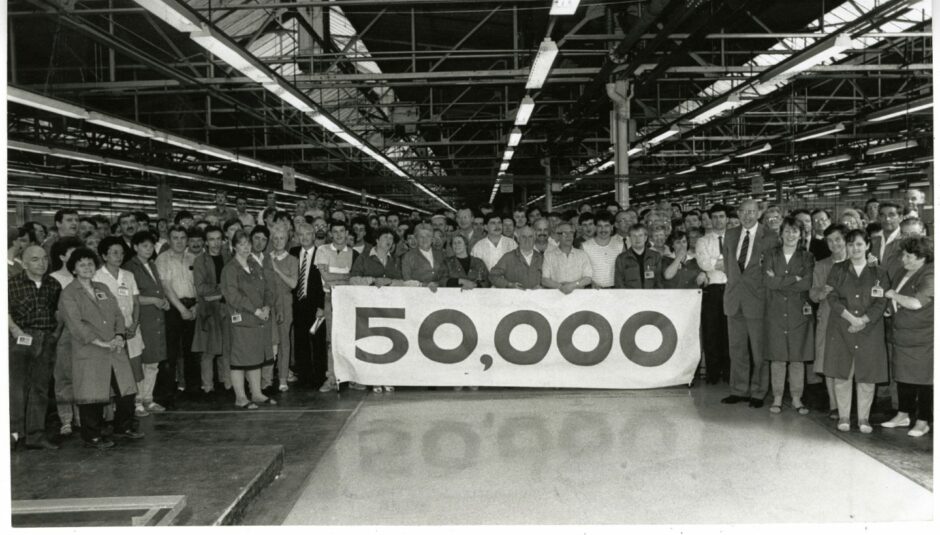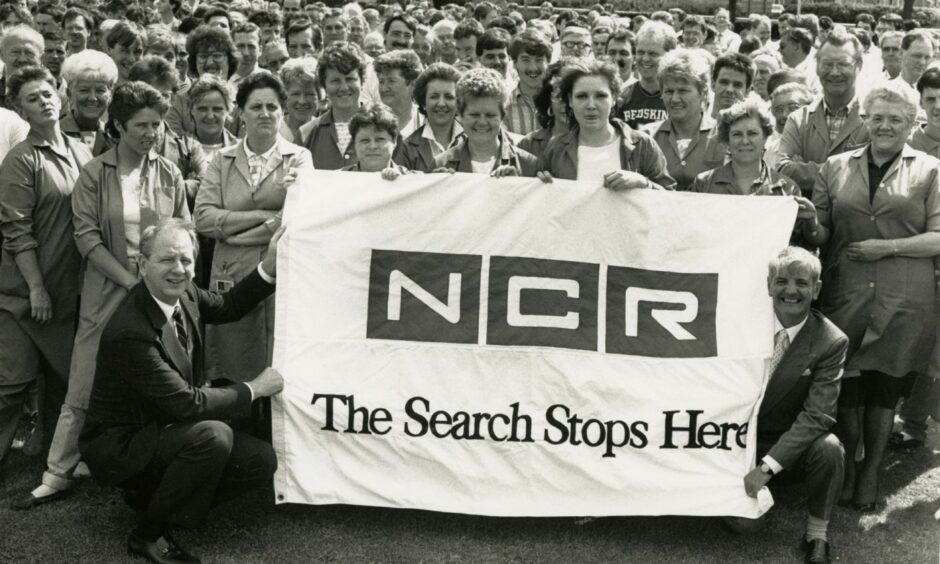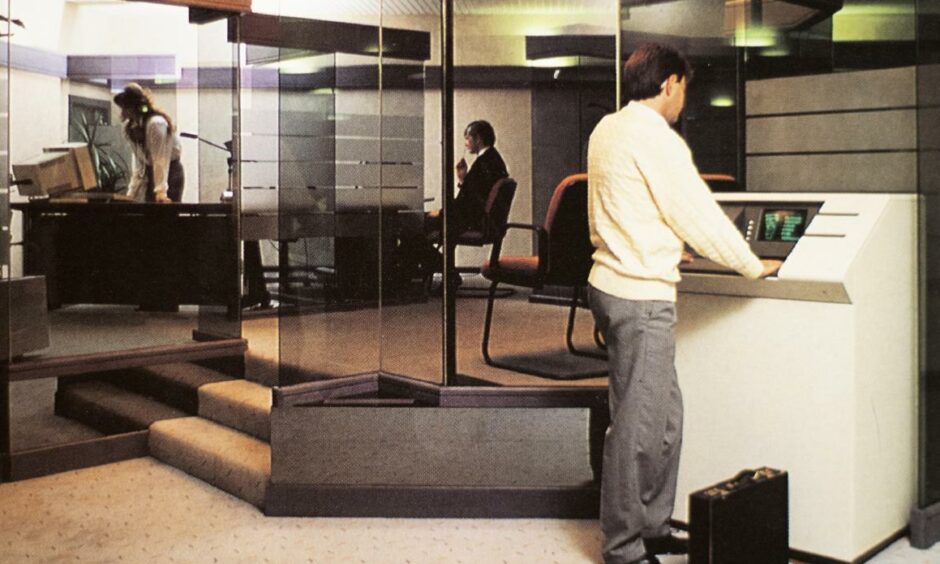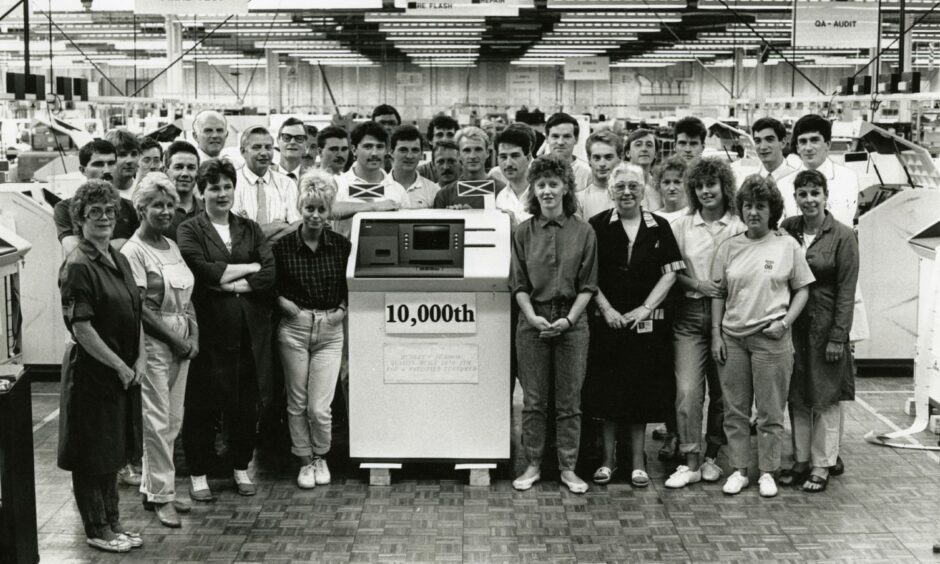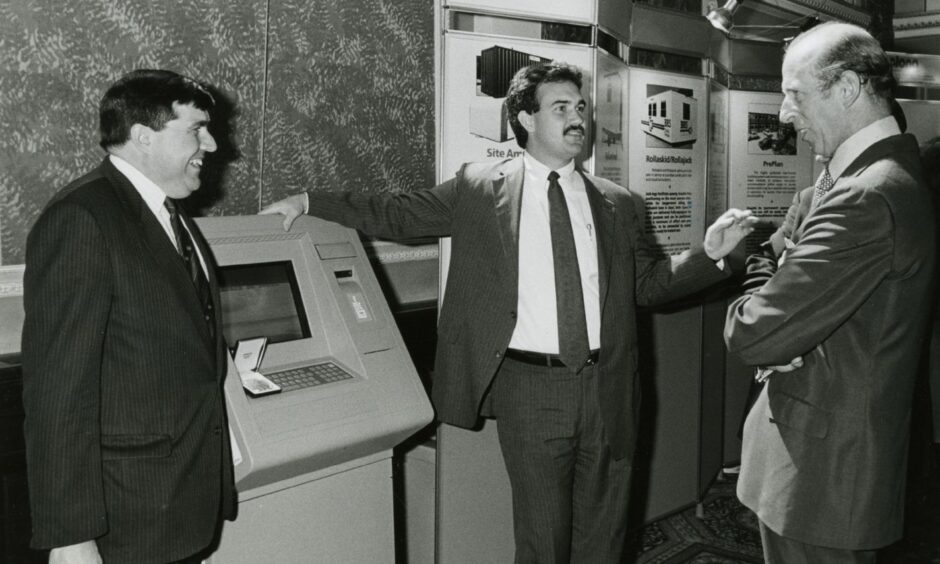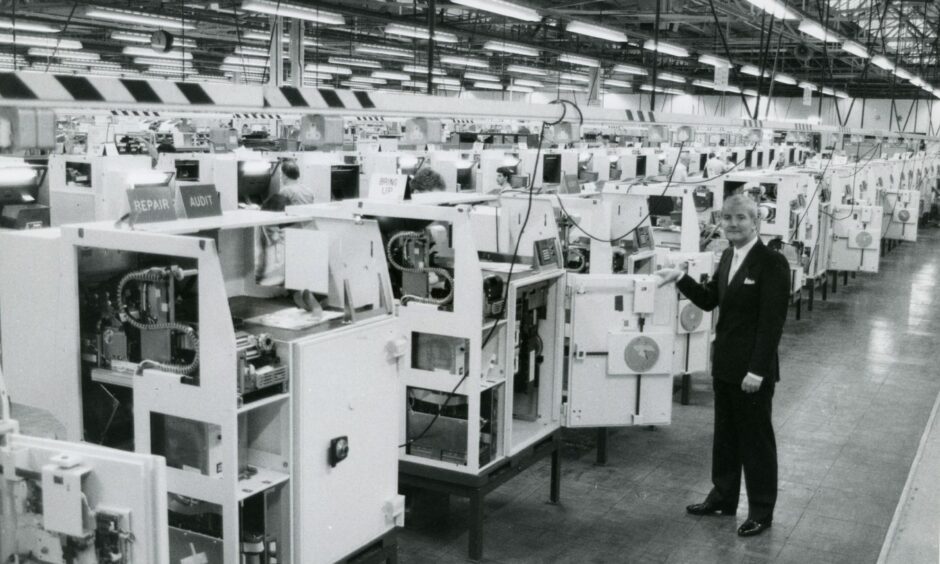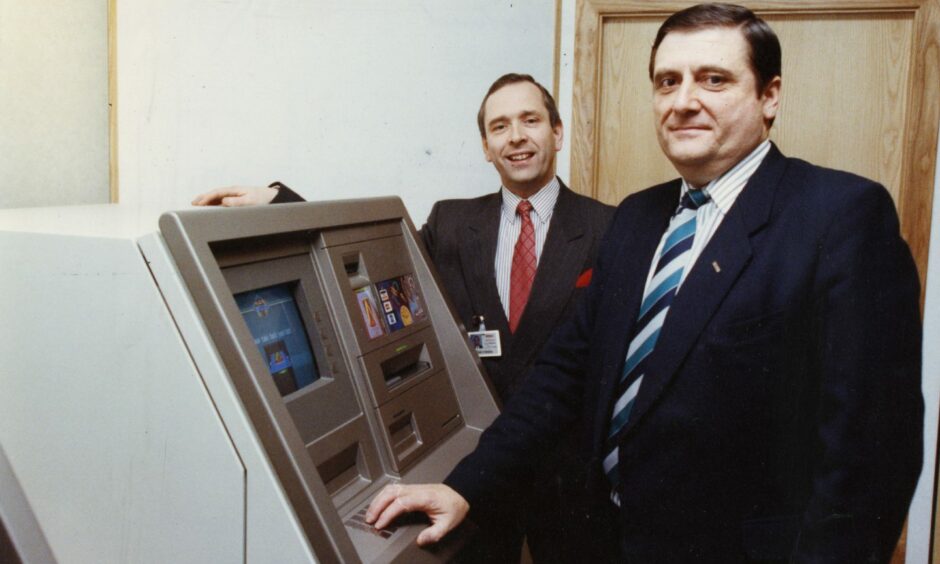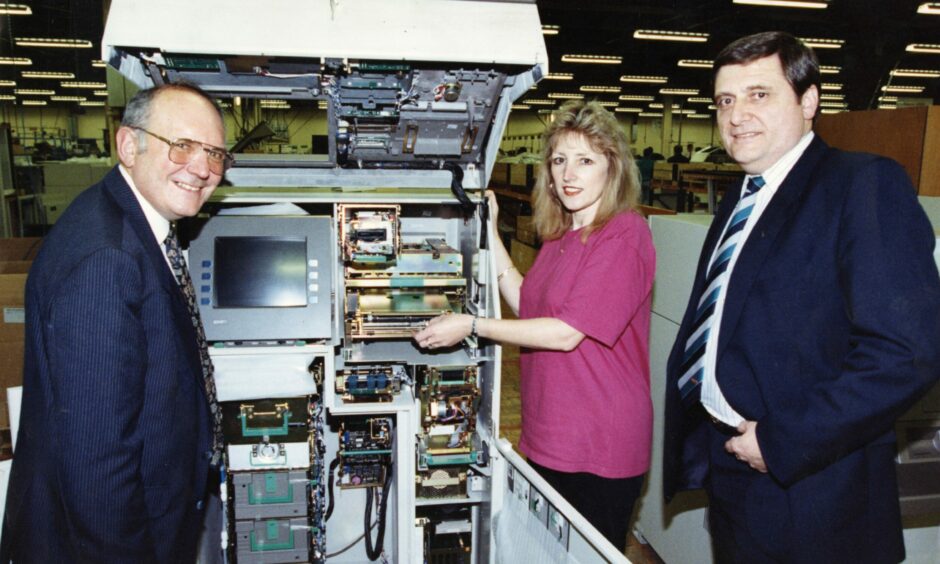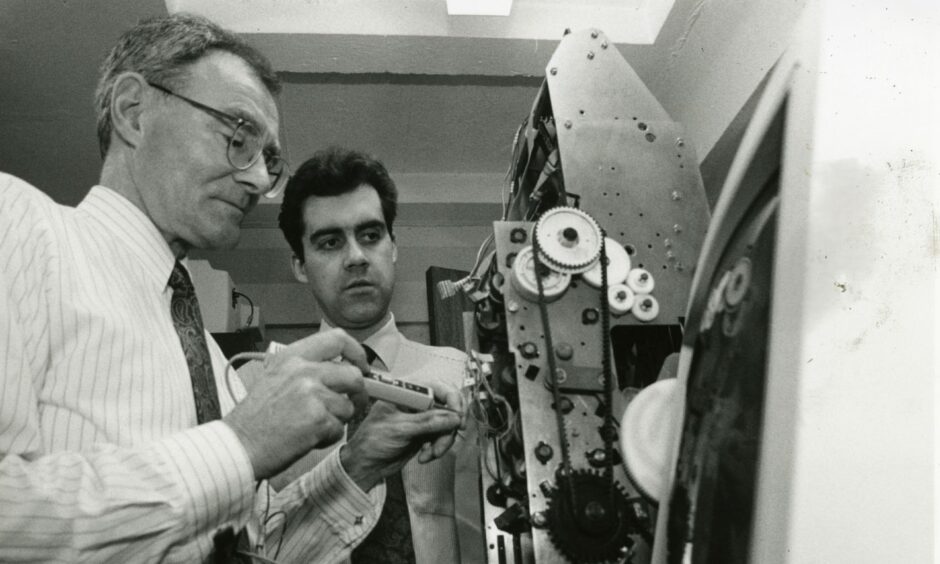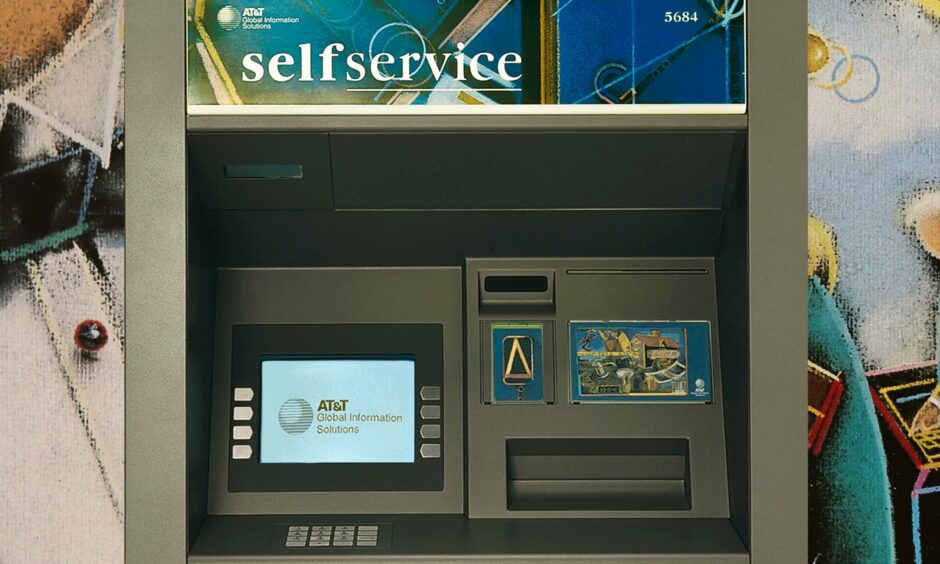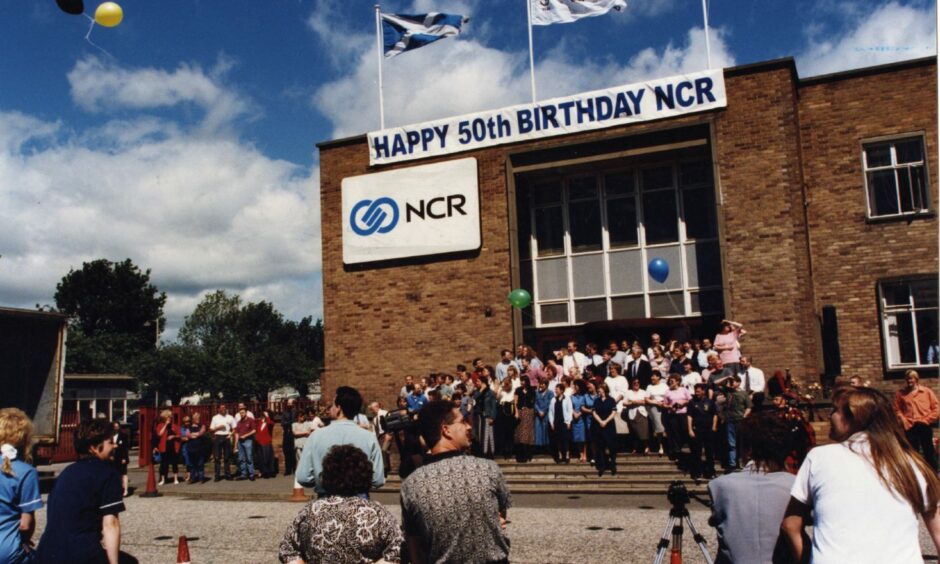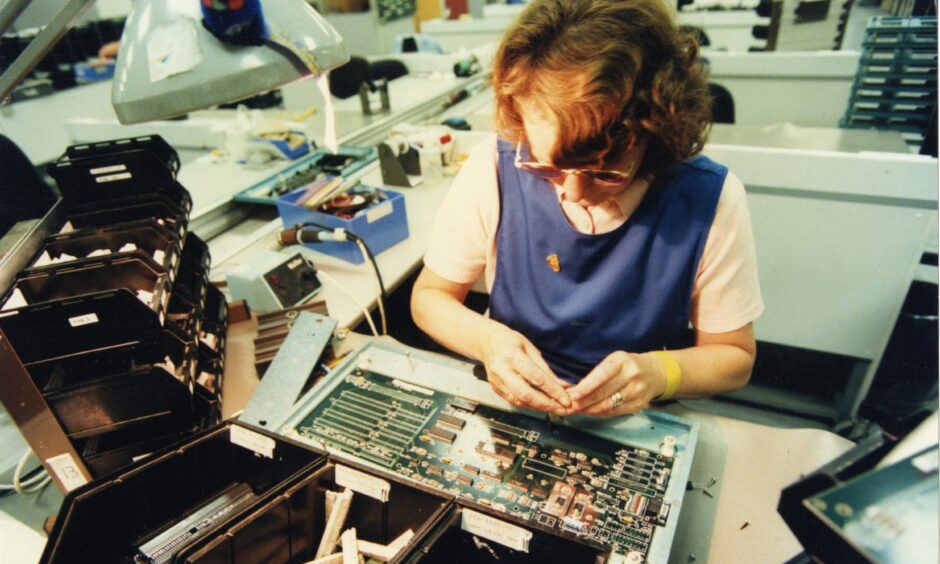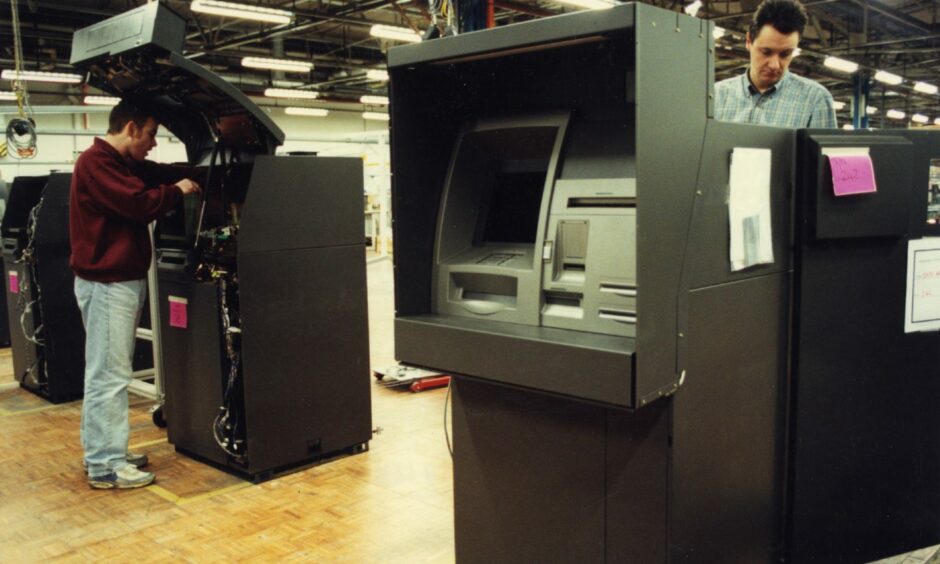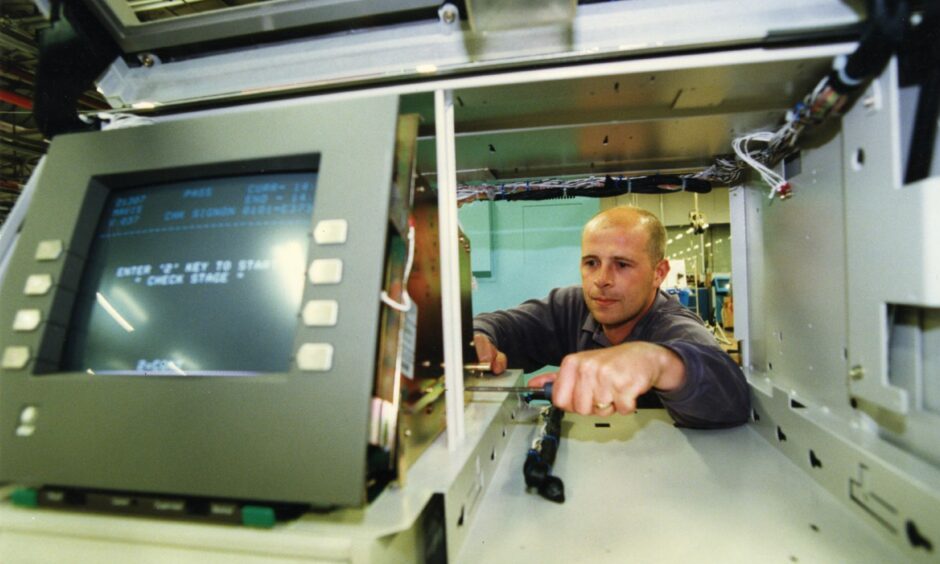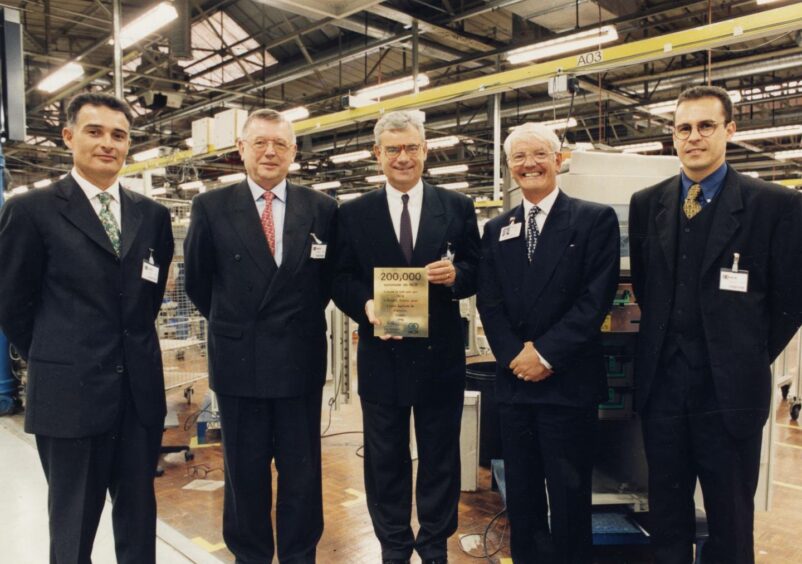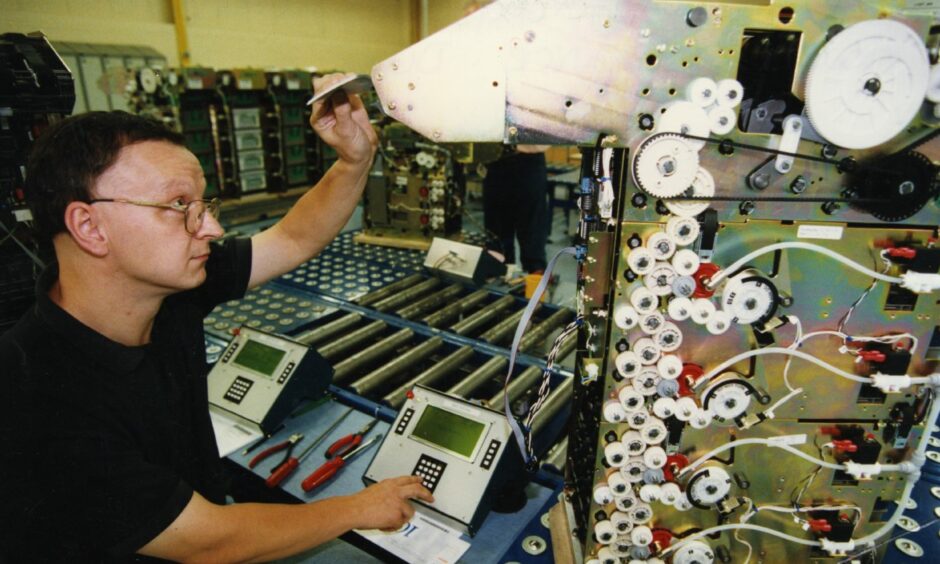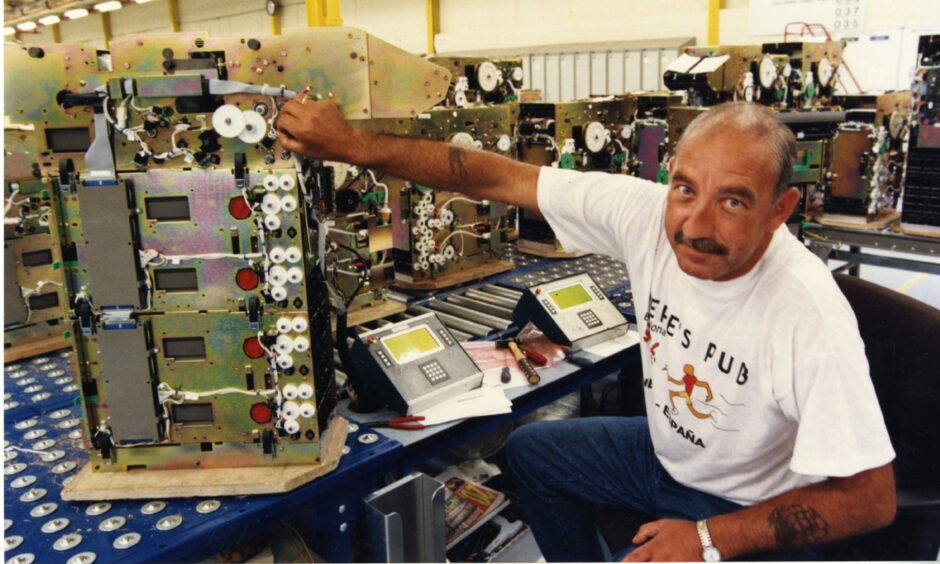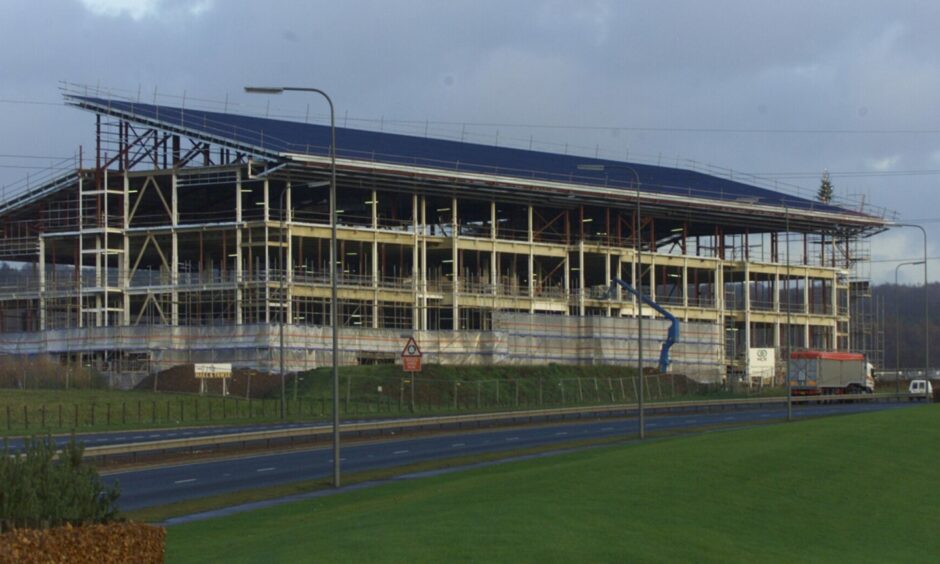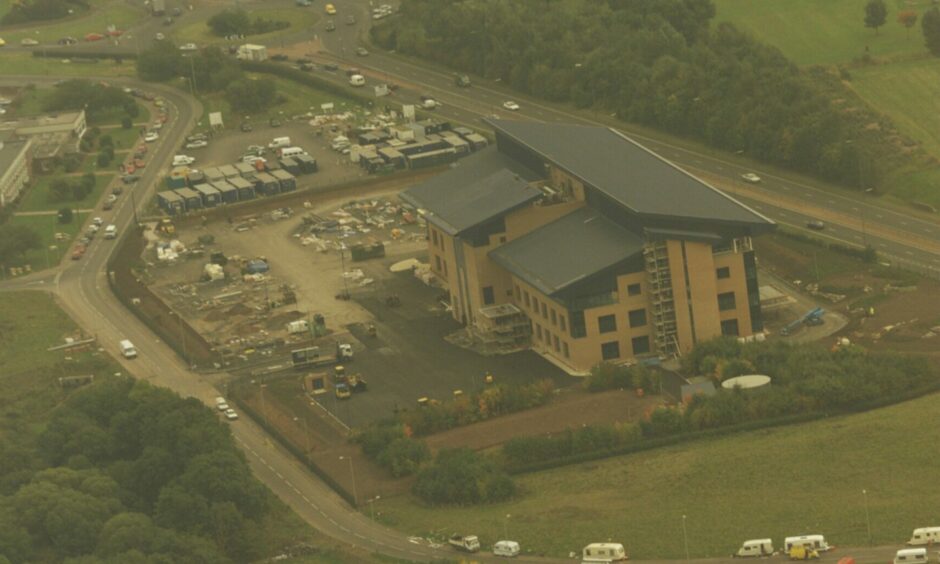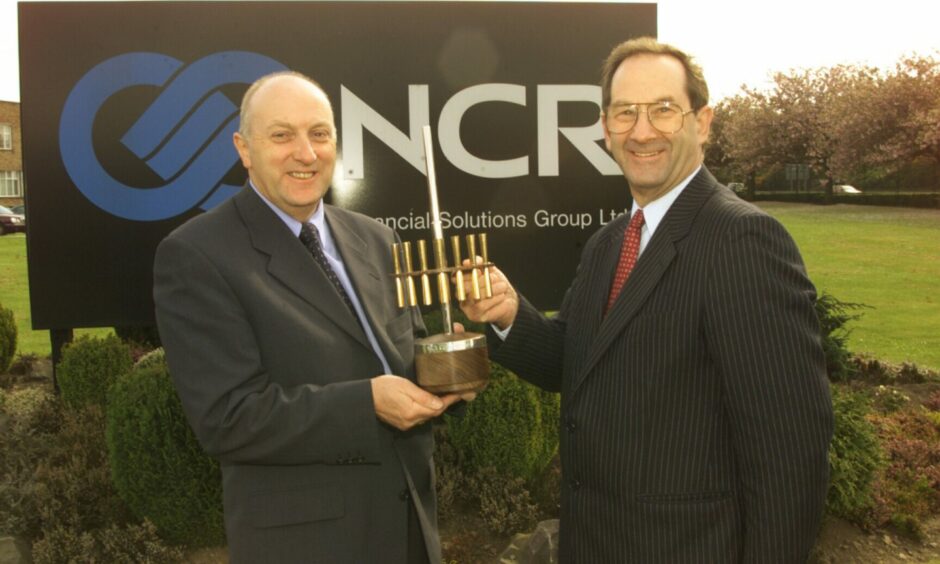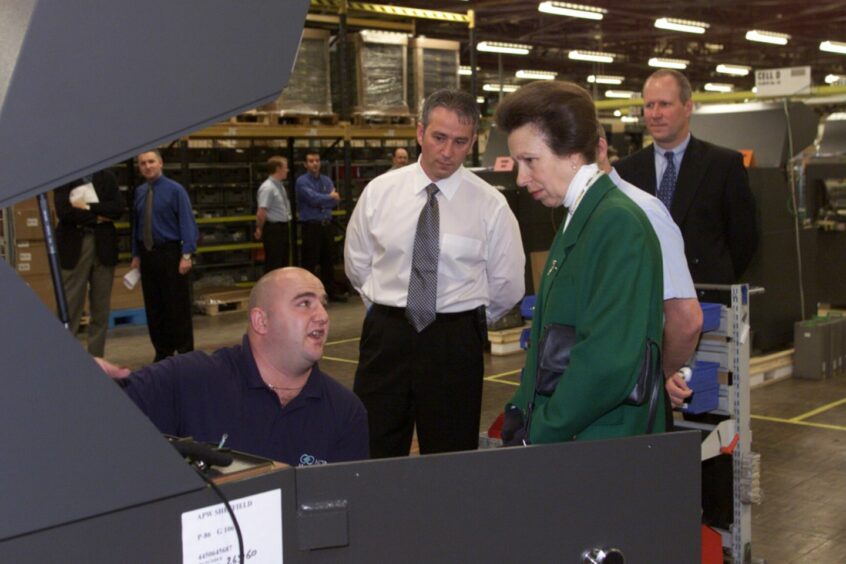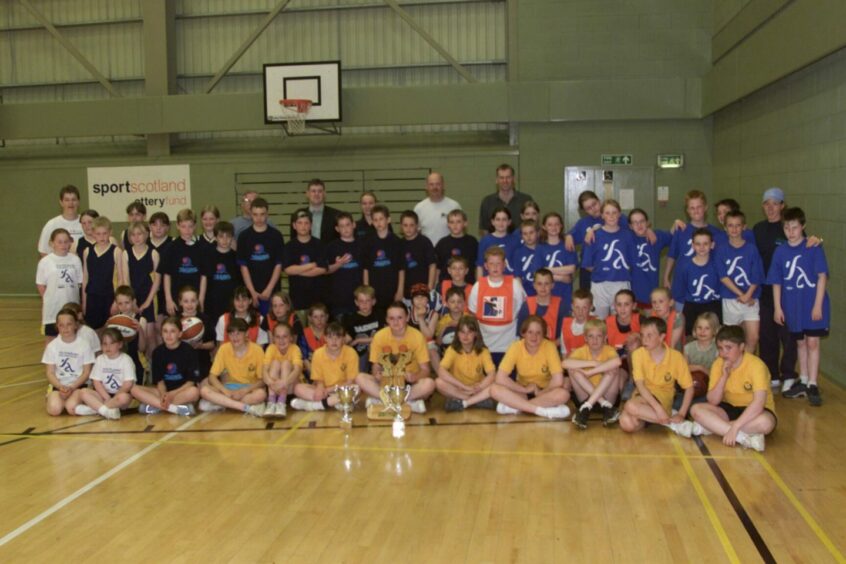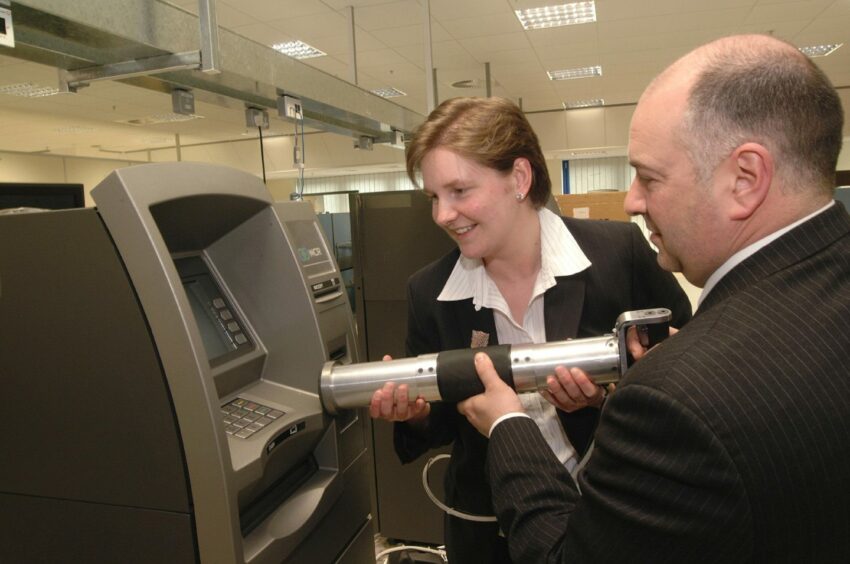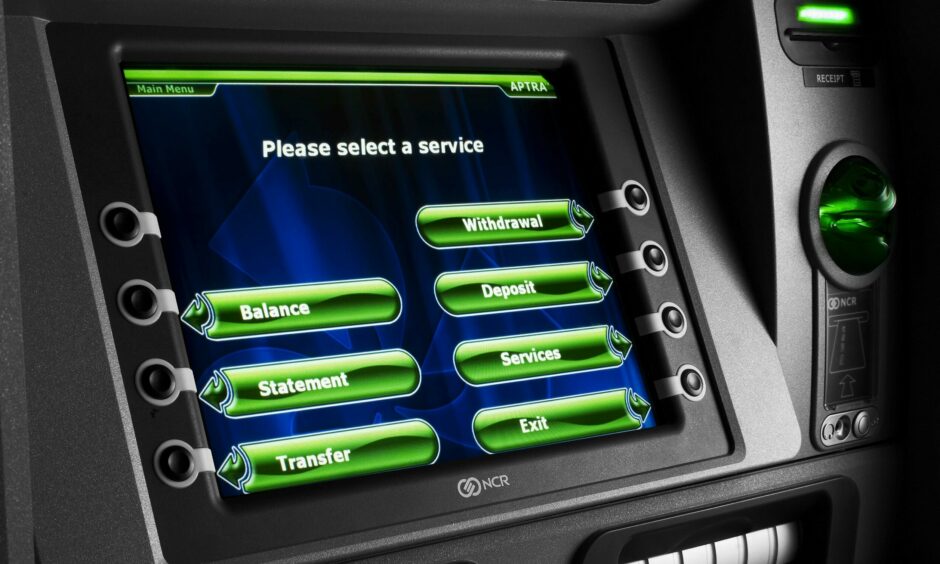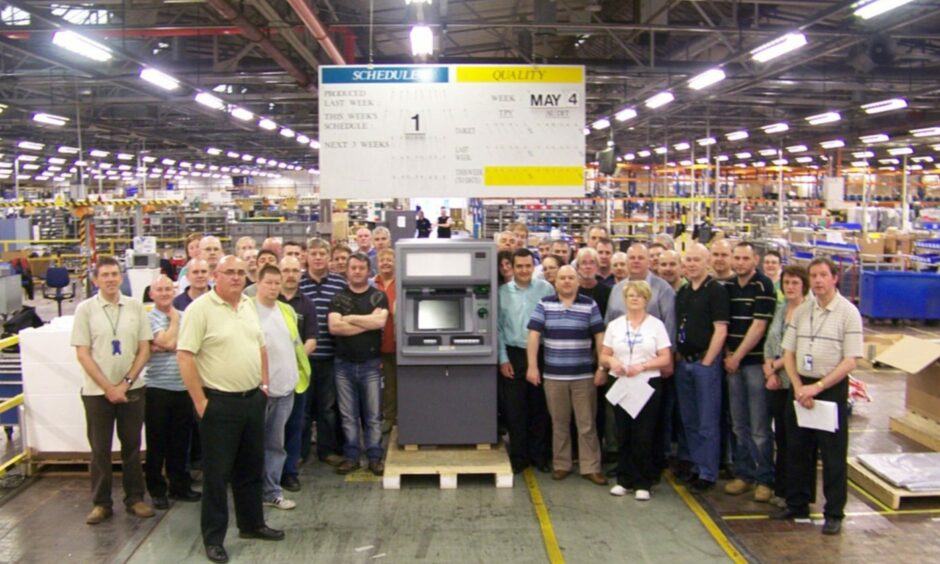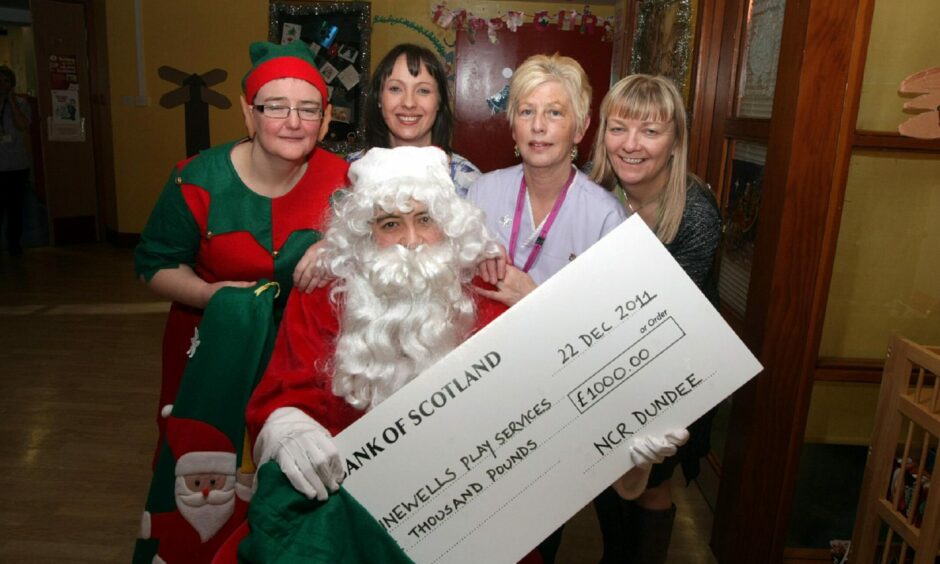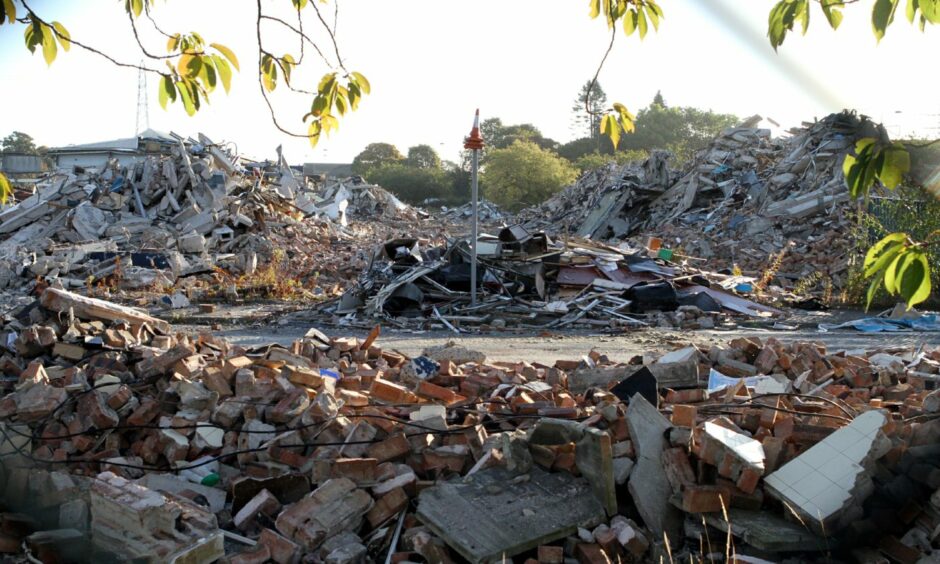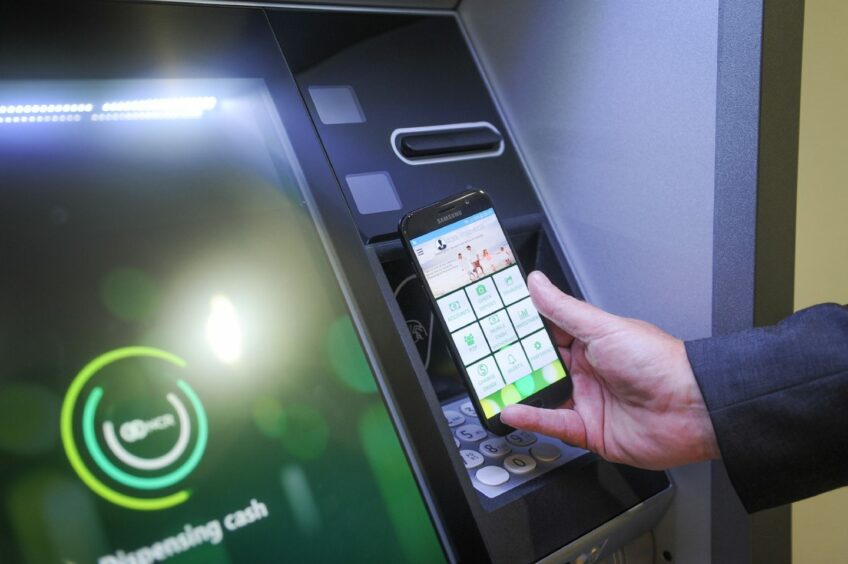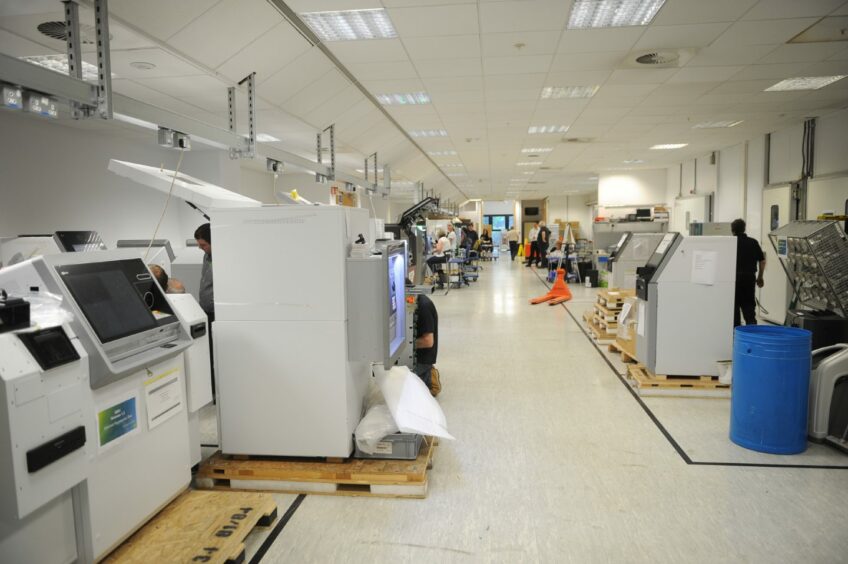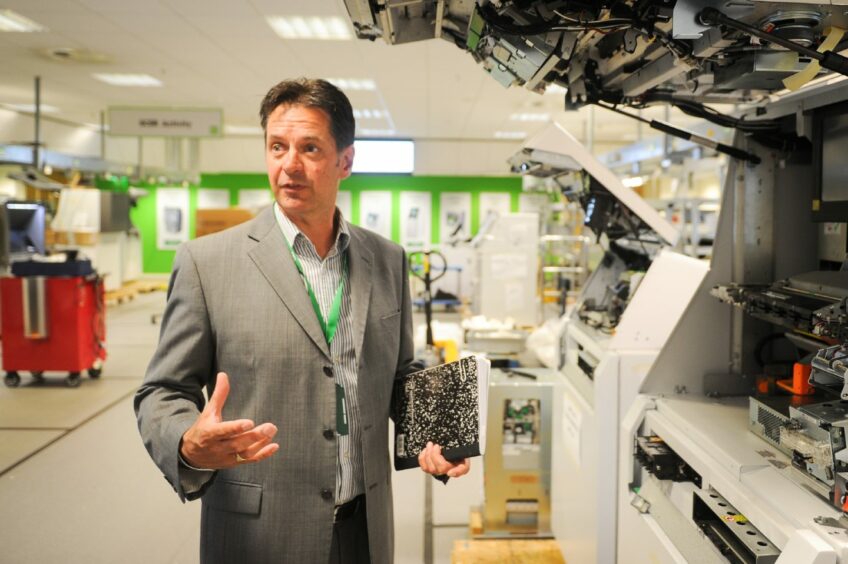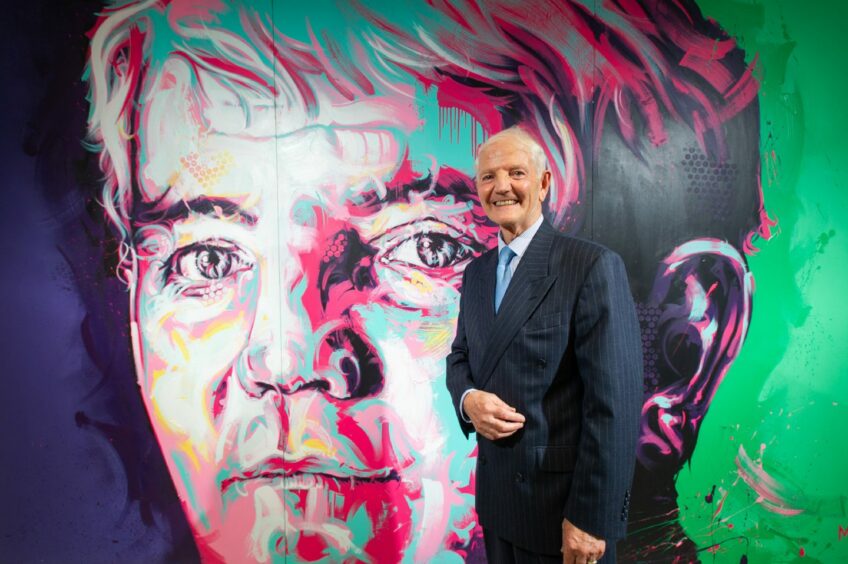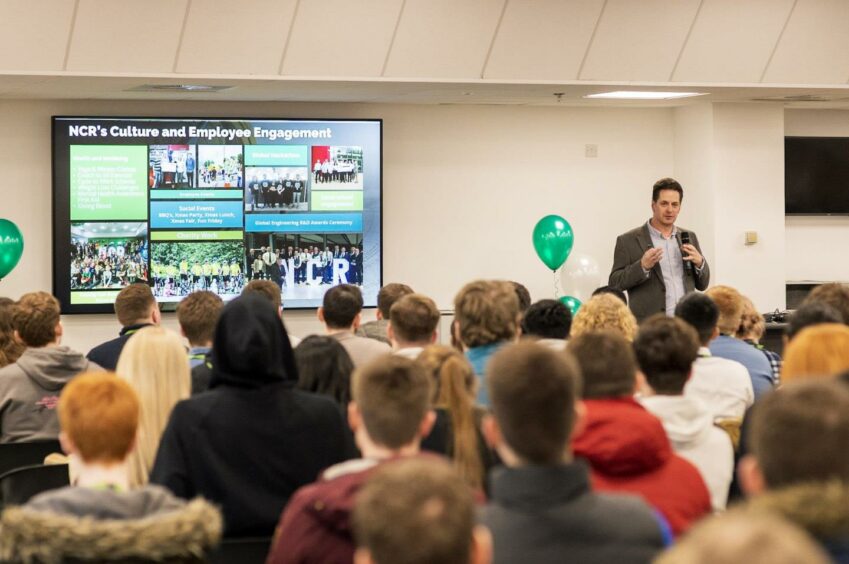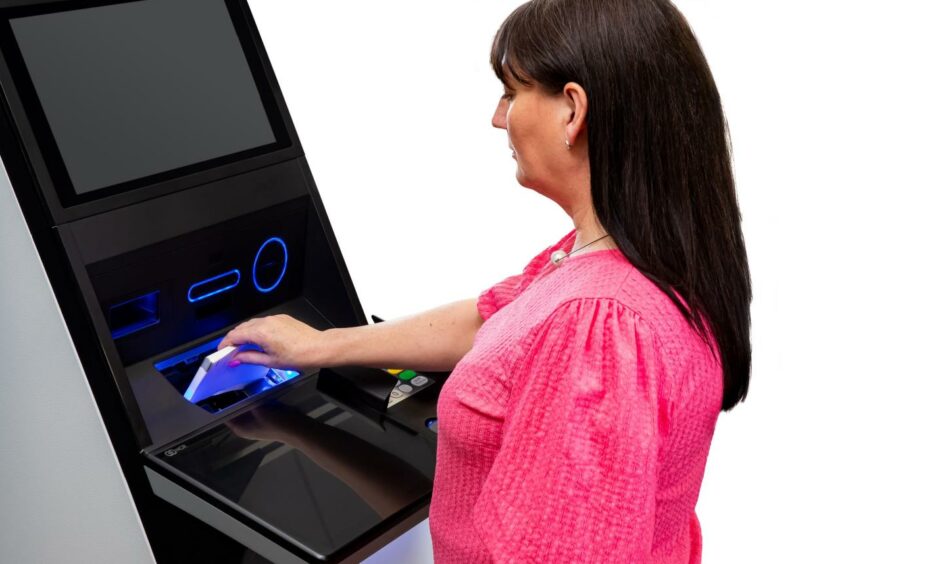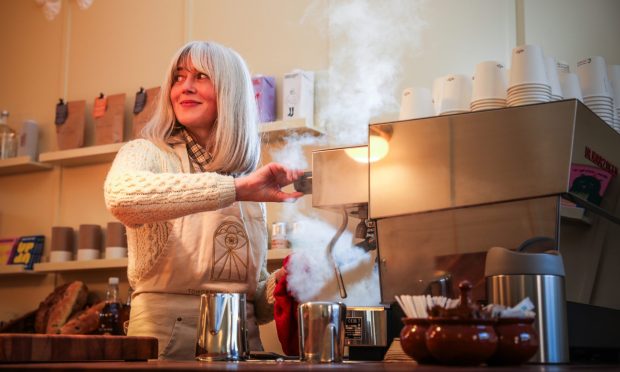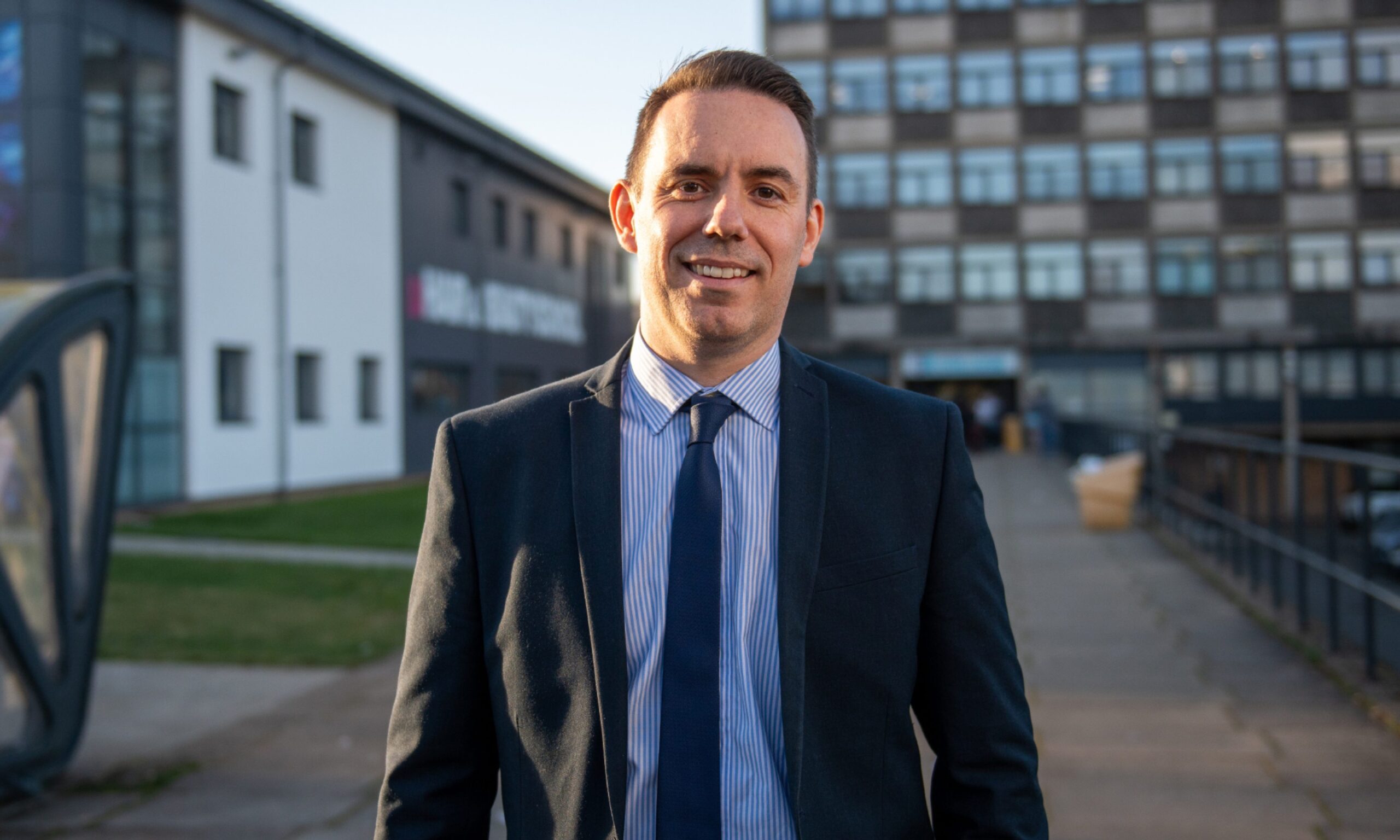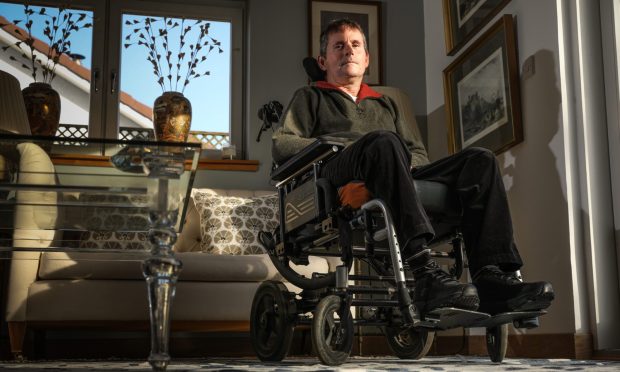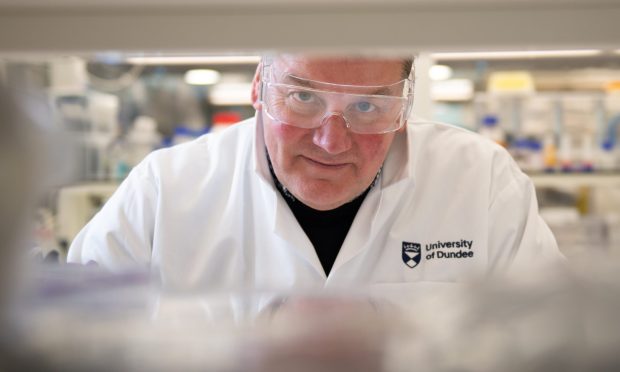It is 75 years since Dundee NCR workers made their first cash register.
The company’s ups and downs in Dundee over the generations tells the story of industrial life in the city.
NCR transformed how factories were operated when it came to the city in 1946 and at its peak employed more than 6,000 in the early 1970s.
But by the end of the 1970s NCR was ready to pull out of Dundee altogether before the determined workforce created a revolutionary ATM.
Its success created NCR Dundee’s reputation for innovation which lasts to this day.
The company is still a major employer in Dundee, where it has its research and development centre of excellence.
NCR’s 75 years is the story of a city and Dundee’s move from industry to technology.
The birth of NCR Dundee
The expanding American company chose Dundee due to its good rail network and available pool of workers with engineering skills.
The Dundee move was part of the Marshall Plan, a US programme to provide aid to Western Europe following the devastation of World War II.
Perks such as a canteen, welfare department, sports clubs and good pay meant Dundonians queued for jobs.
Typical of the post-war spirit, production actually started a year before the Camperdown factory was finished in 1947.
NCR Dundee 1950s – a golden decade
By the 1950s NCR had become one of the largest employers in Dundee.
Workers had a comprehensive programme of sports fixtures, social functions and theatrical productions.
NCR golfers even had their own club on the Monifieth Links.
NCR Dundee in the 1960s – the move to electronics
The 1960s was a buoyant time. A pioneering electro-mechanical accounting system, the Computronic, was designed in Dundee.
It compared its first answer with a second checking calculation. By the middle of the decade half a million machines had been made at NCR Dundee.
Britain’s looming conversion to a decimal system in 1971 led to a surge in demand for new cash registers and accounting machines at the end of the decade.
NCR Dundee in the 1970s – tough times
The Dundee operation expanded rapidly and at its peak in 1971, there were 6,000 NCR workers across seven factories.
But the 1970s saw a stark decline in fortunes as electronic cash registers from Japan flooded the marketplace.
NCR Dundee produced a wide range of products, including an early ATM which was a disaster due to its unreliability.
By the end of the decade staff numbers were down to 1,100 and NCR was considering pulling out of Dundee altogether.
The chairman of NCR, Mr Anderson, closed the decade by sending each Dundee employee a letter.
It warned: “Dundee has an outstanding opportunity to be one of the highest-ranked engineering and manufacturing facilities in NCR.
“However, should it undertake another self-destructive year like 1979, I shall close it down.”
The 1980s – the ATM revolution
When Jim Adamson was appointed head of NCR Dundee in 1979 he was told he had “six months to stop the bleeding” or NCR Dundee would close.
He realised the only way to save Dundee was to create a world-beating product.
He had no budget for engineers but that didn’t stop him creating an engineering team to gamble everything on further development work on the ATM.
The result changed the market – the 5070 machine is to this day the most successful product in NCR’s history.
NCR Dundee in the 1990s
By the end of the 1980s NCR’s global competition was threatening to draw level again on ATM technology.
NCR pulled ahead again with its fourth generation machines, developed in Dundee, with new developments in electronics and document handling.
AT&T took over NCR from 1991 to 1996 and the Dundee operation was briefly rebranded.
The 2000s – new research centre and end of ATM production
NCR made a statement of intent at the start of the new century with a £20 million investment in its research and development centre of excellence.
It was a dedicated space for the Dundee team to continue to create the next generations of ATMs.
Meanwhile a hard decision was made to close the Gourdie factory which had served the company so well for decades as manufacturing moved to Hungary.
The last ATM was made on May 20 2009, ending 63 years of manufacturing in the city.
NCR Dundee in the 2010s – most advanced products in the world
NCR Dundee has all of the company’s corporate functions but the focus is on innovation.
Today, NCR is a leader in software and services, ATMs and self-service technology.
Research and development account for around half the Dundee workforce.
The 2020s: New plans for growth
Adam Crighton, Dundee site leader, said NCR Dundee has recruited more than 100 staff in the last 18 months and is still growing.
Reflecting on the company’s long history in the city, he said: “People say that everyone in Dundee knows someone who has worked at NCR, or as it was known, The Cash. We’re very proud of our legacy in this amazing city.
“We are also really excited about our future. We have a plan to grow our workforce to be over 600 next year, with high skilled roles in engineering, finance and product management.”
Mr Crighton adds: “By focusing on innovation, we have a strong foundation for growth that will ensure our presence in the city for many years to come.”
